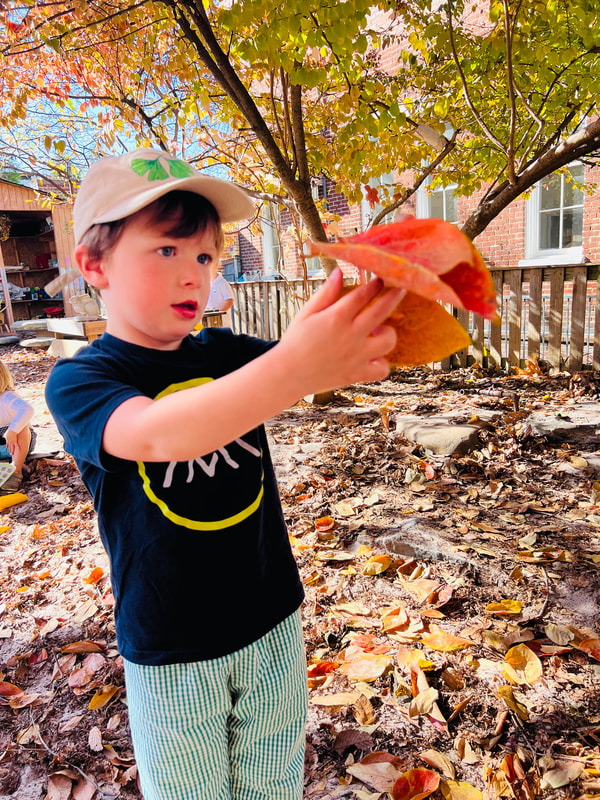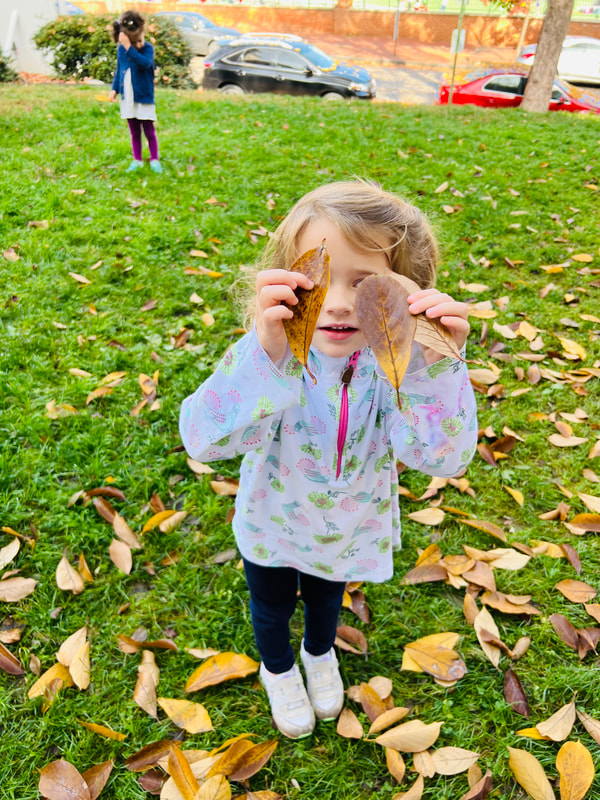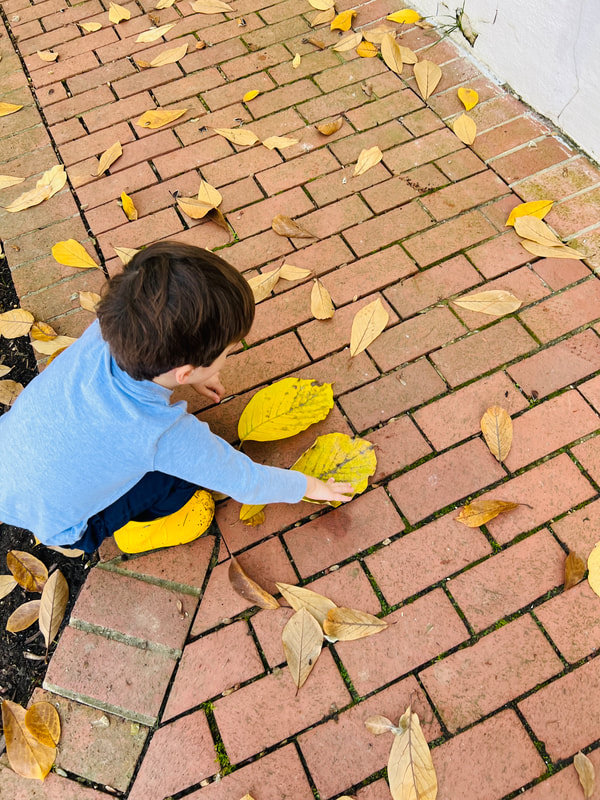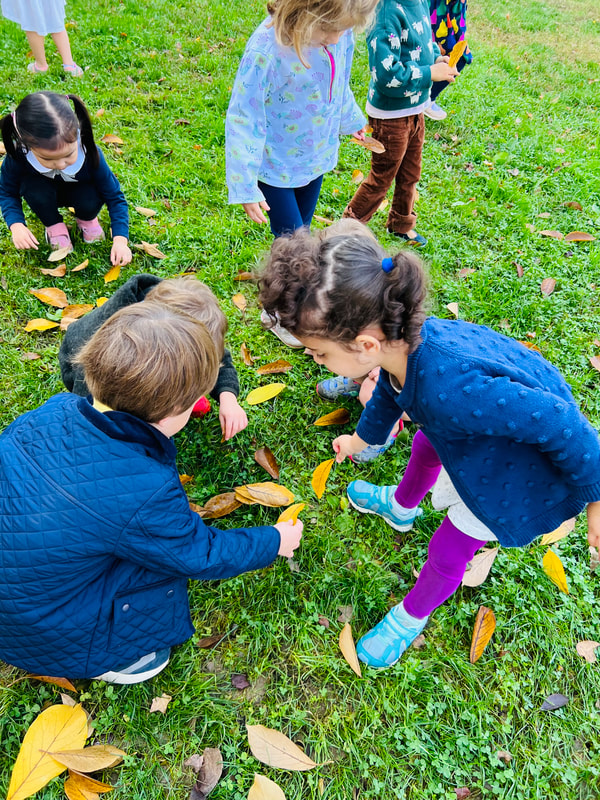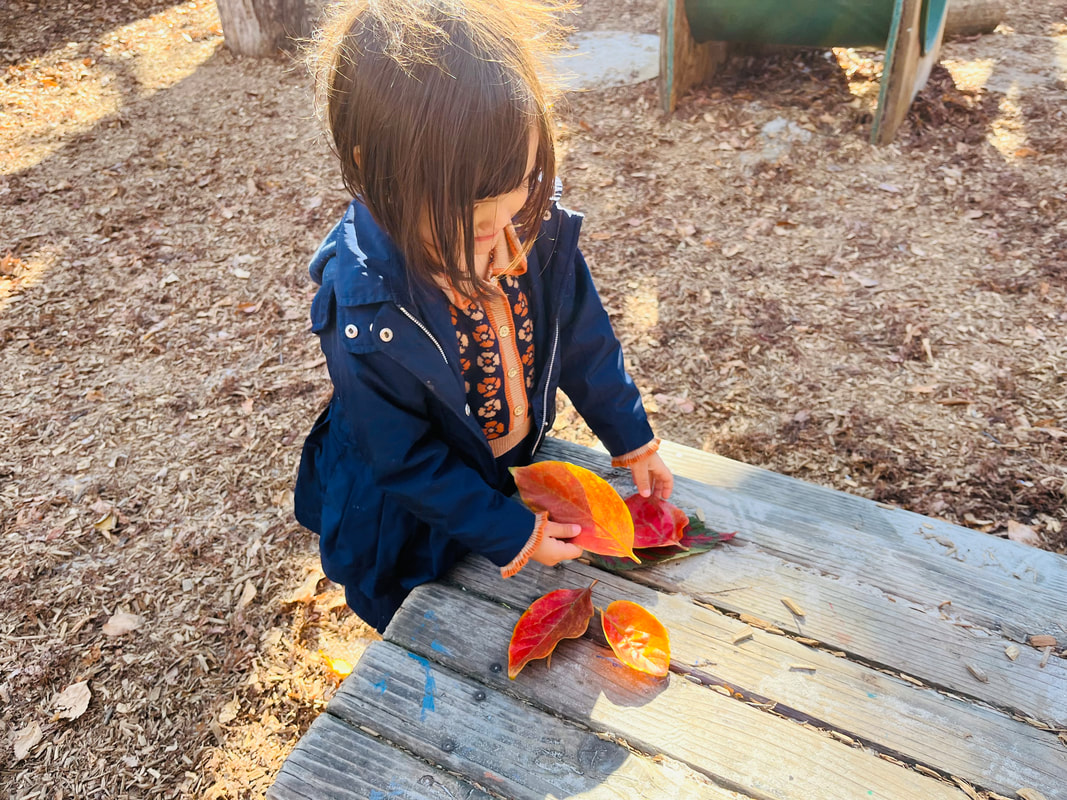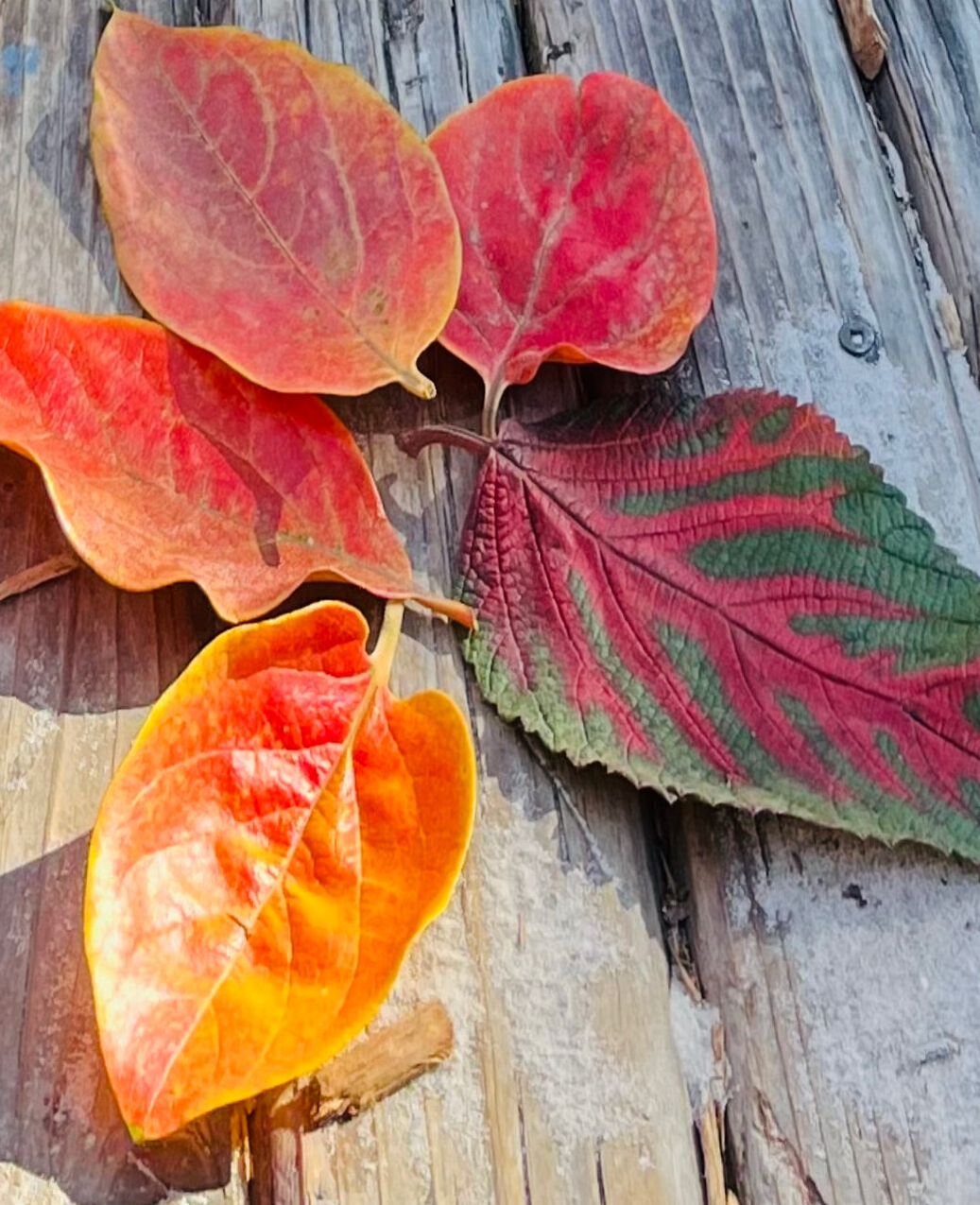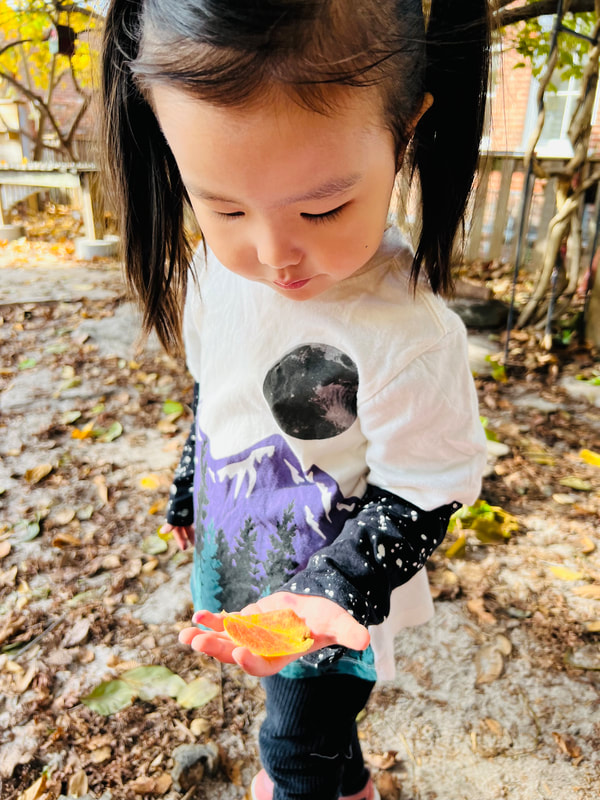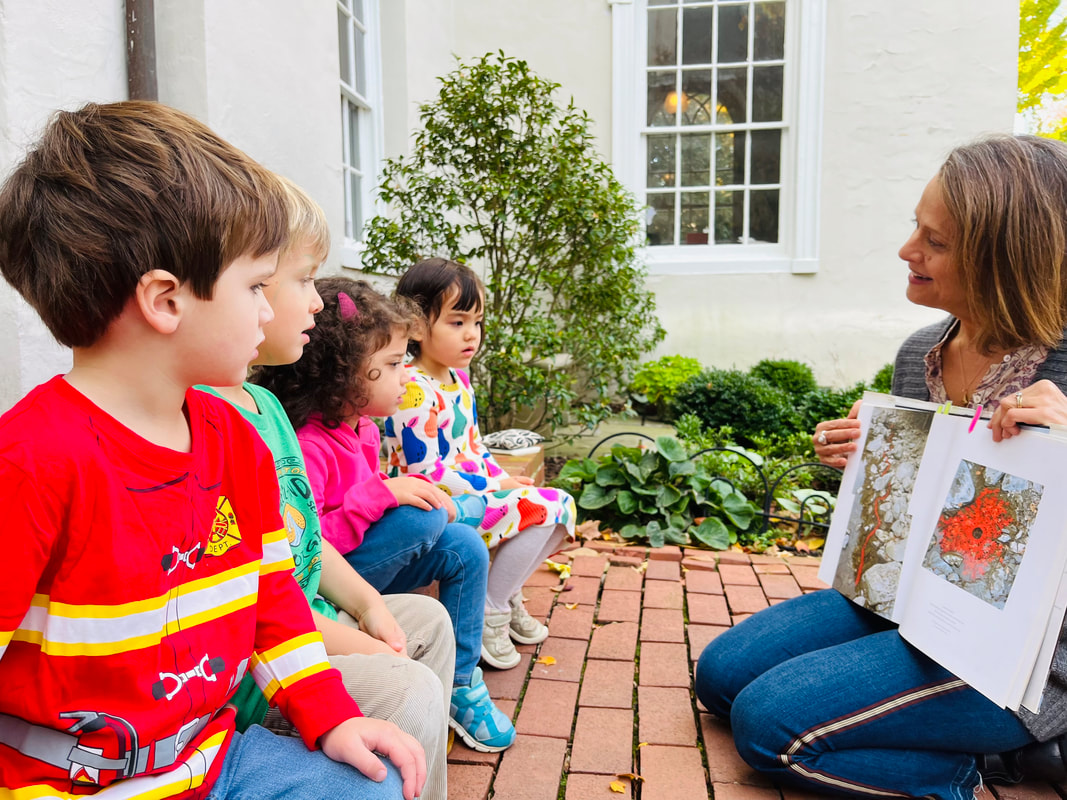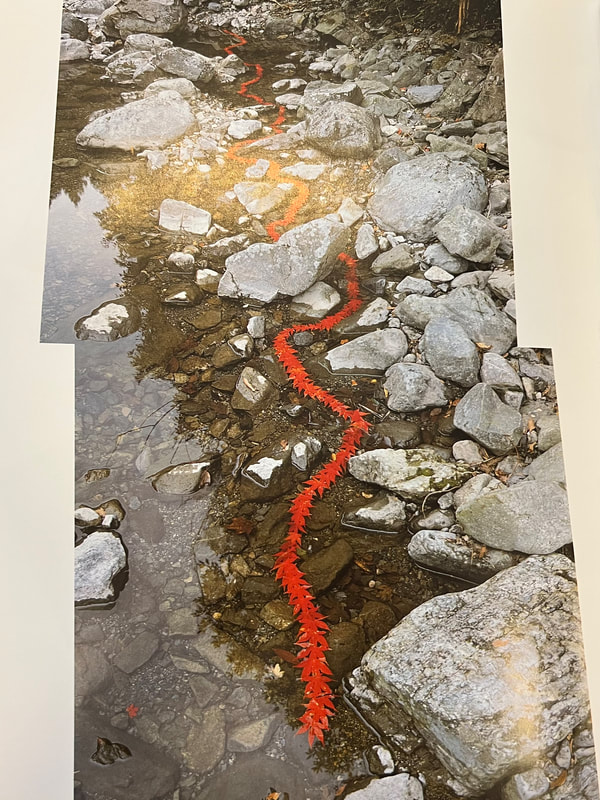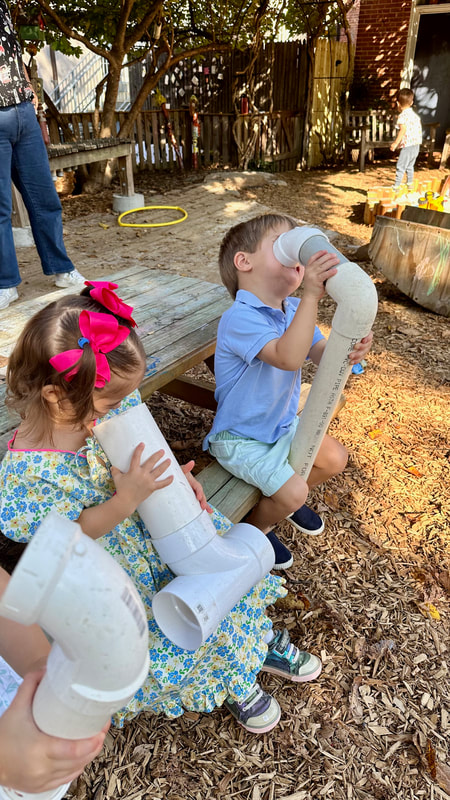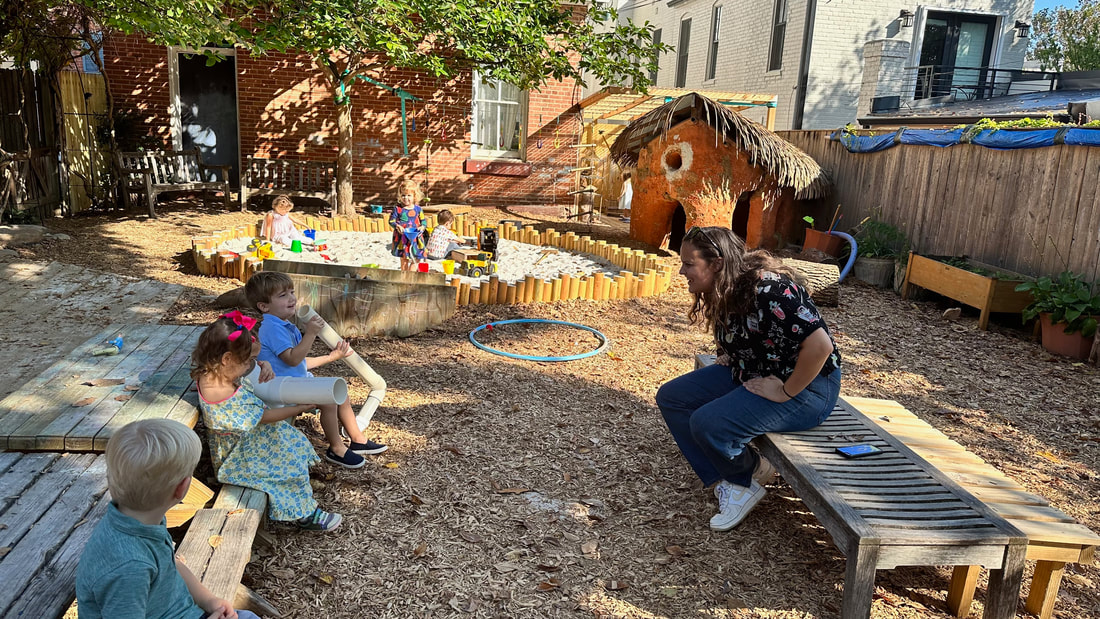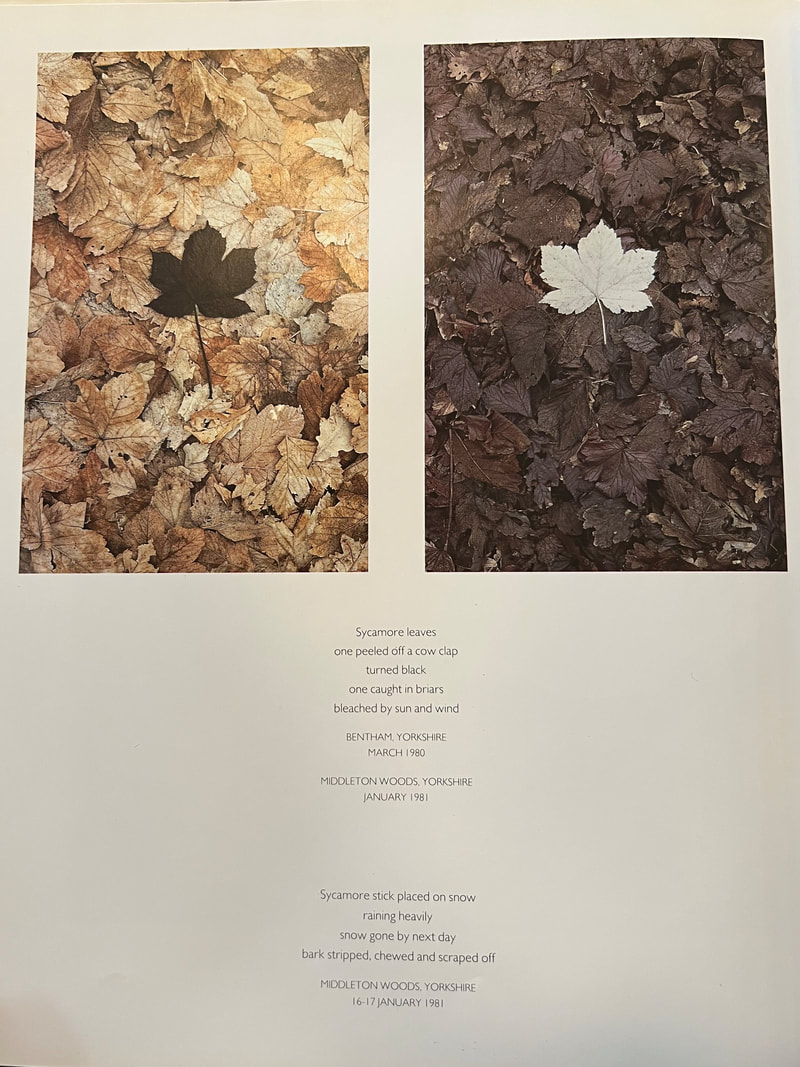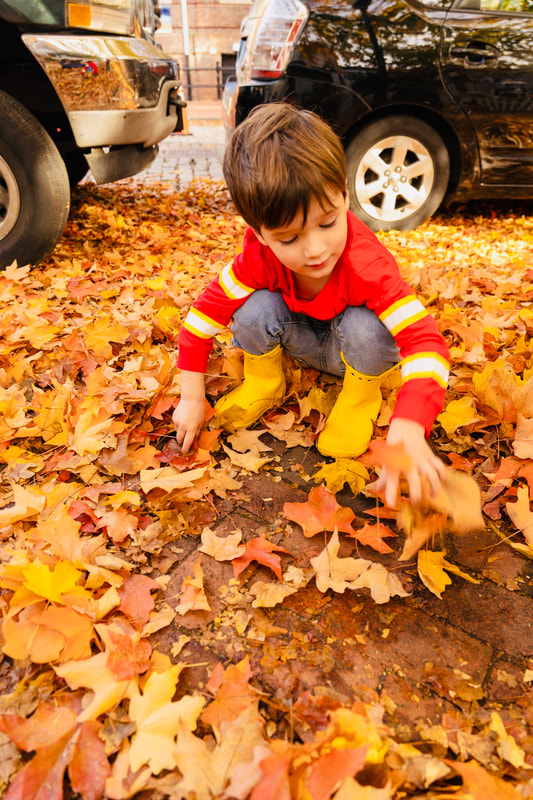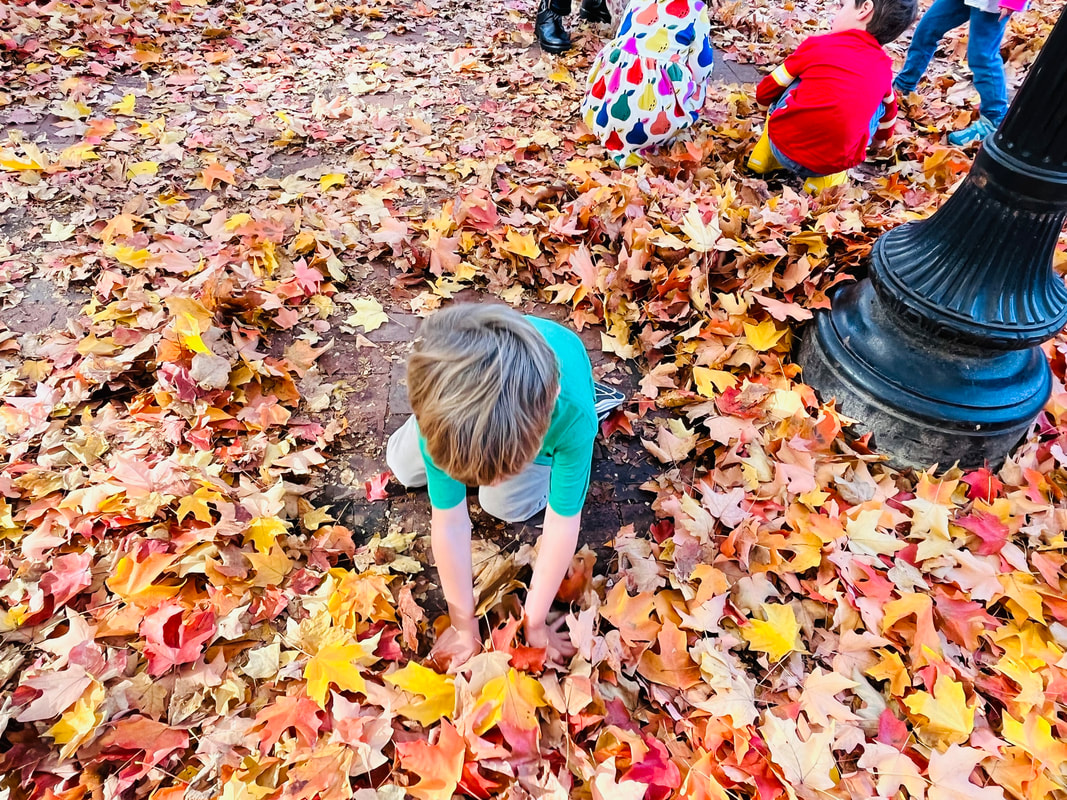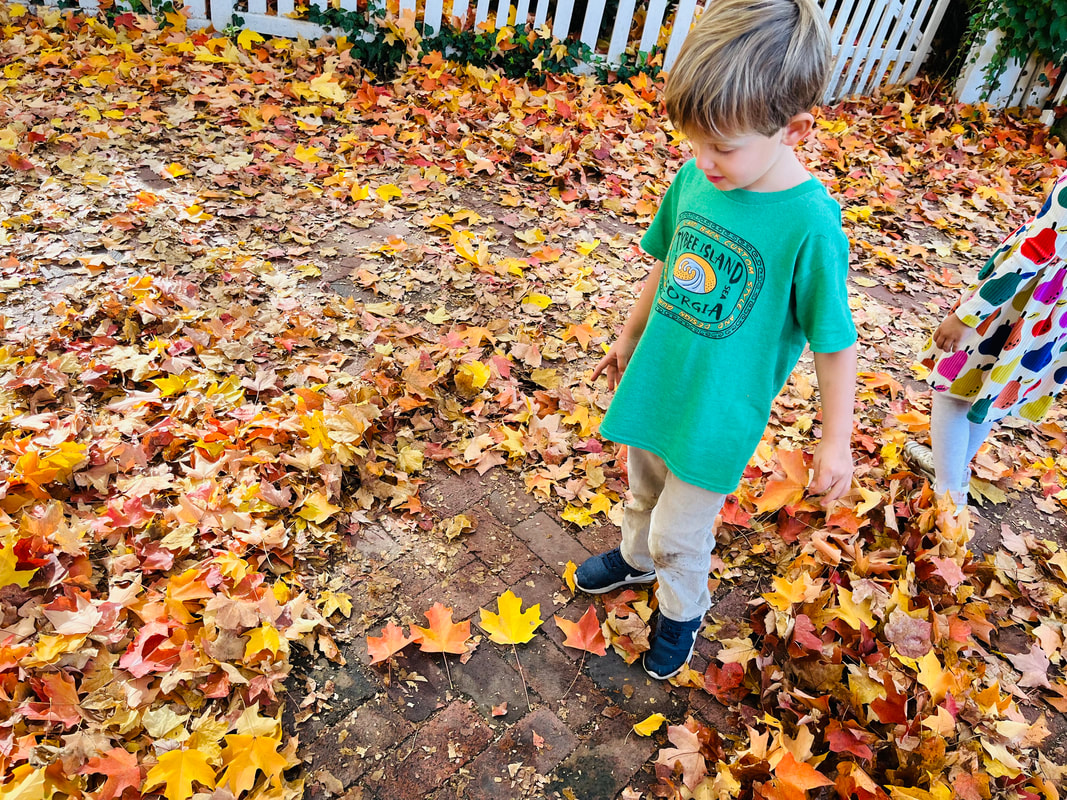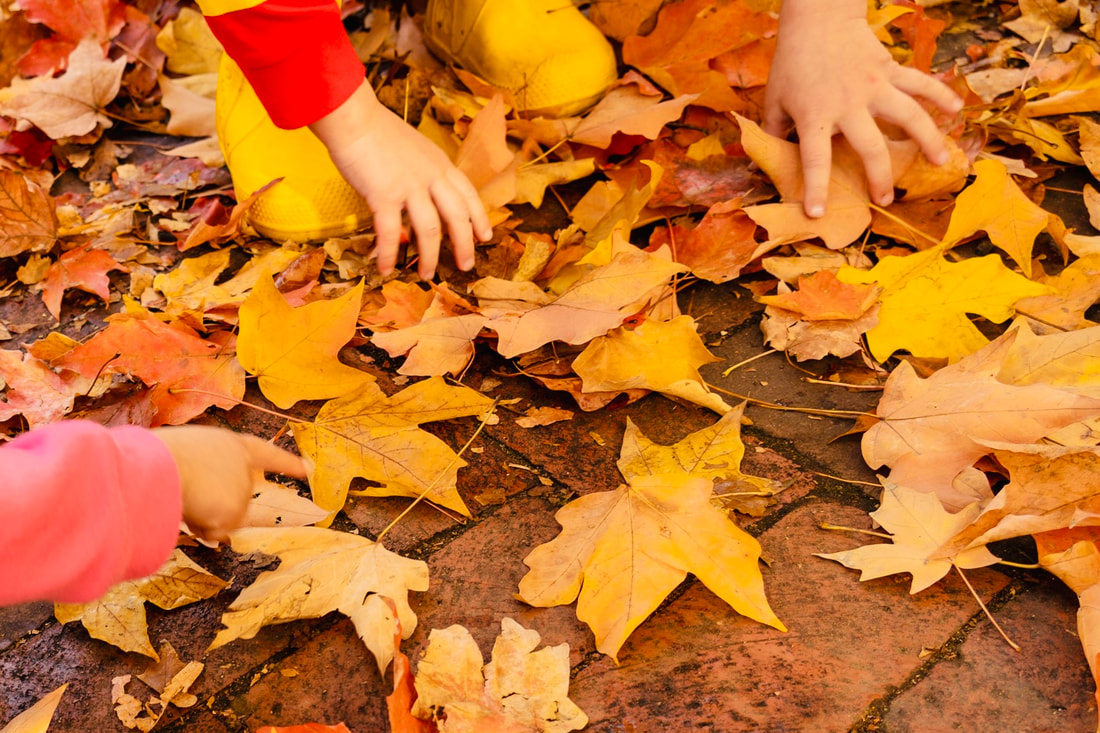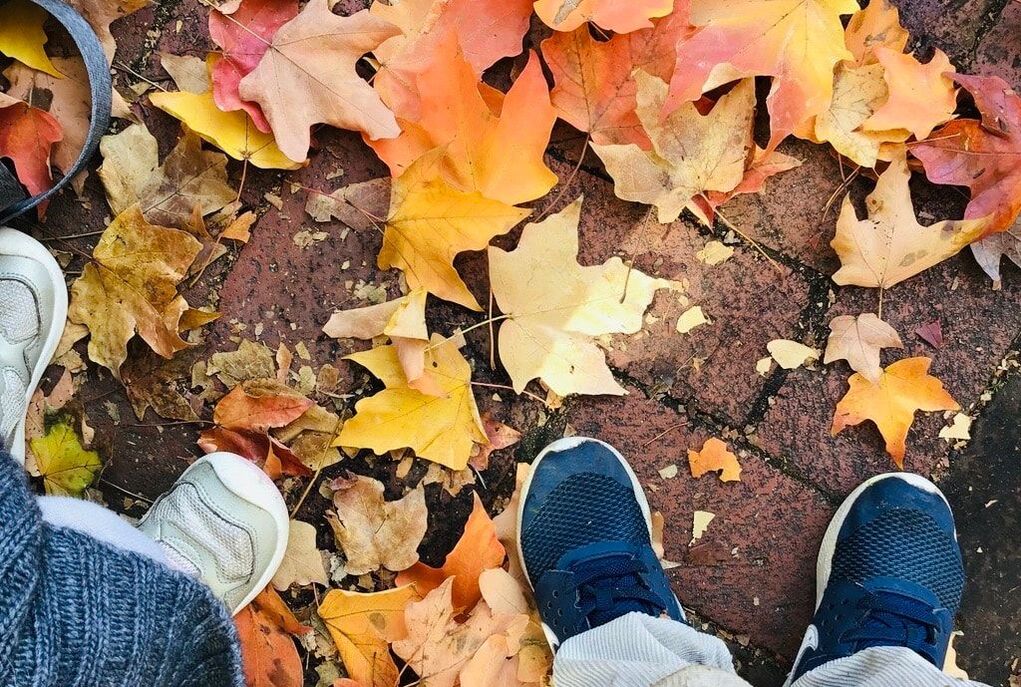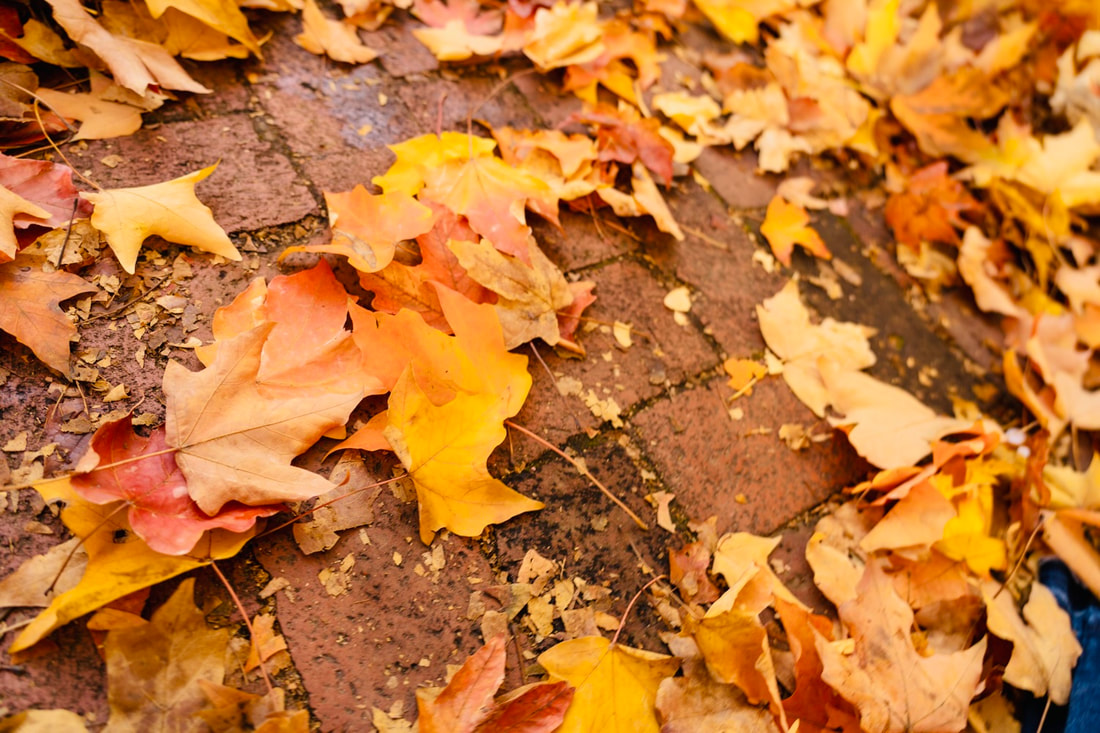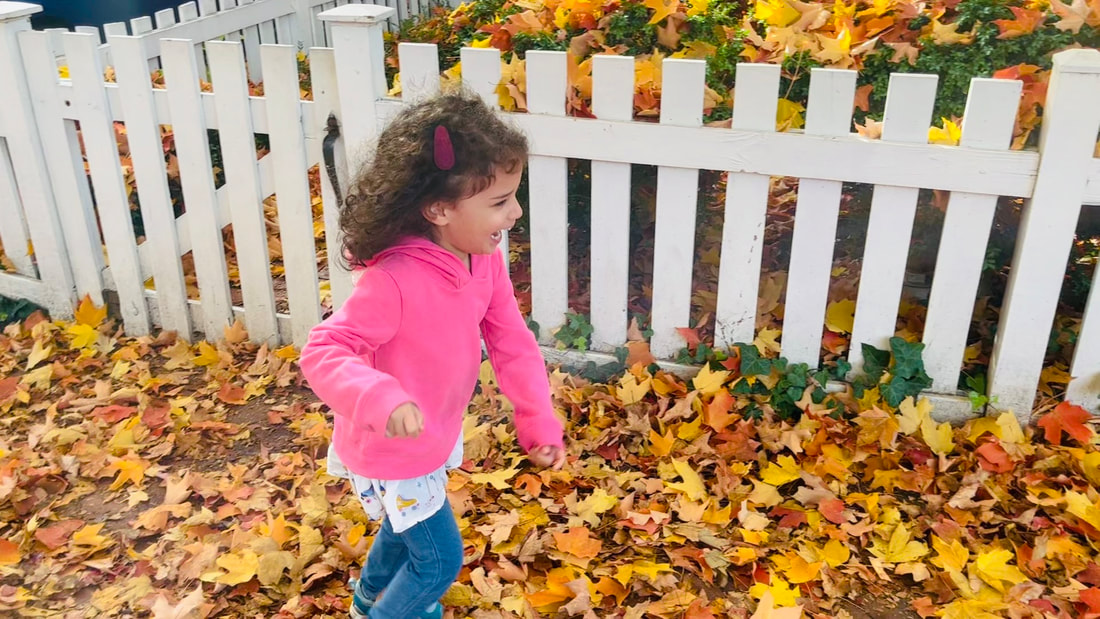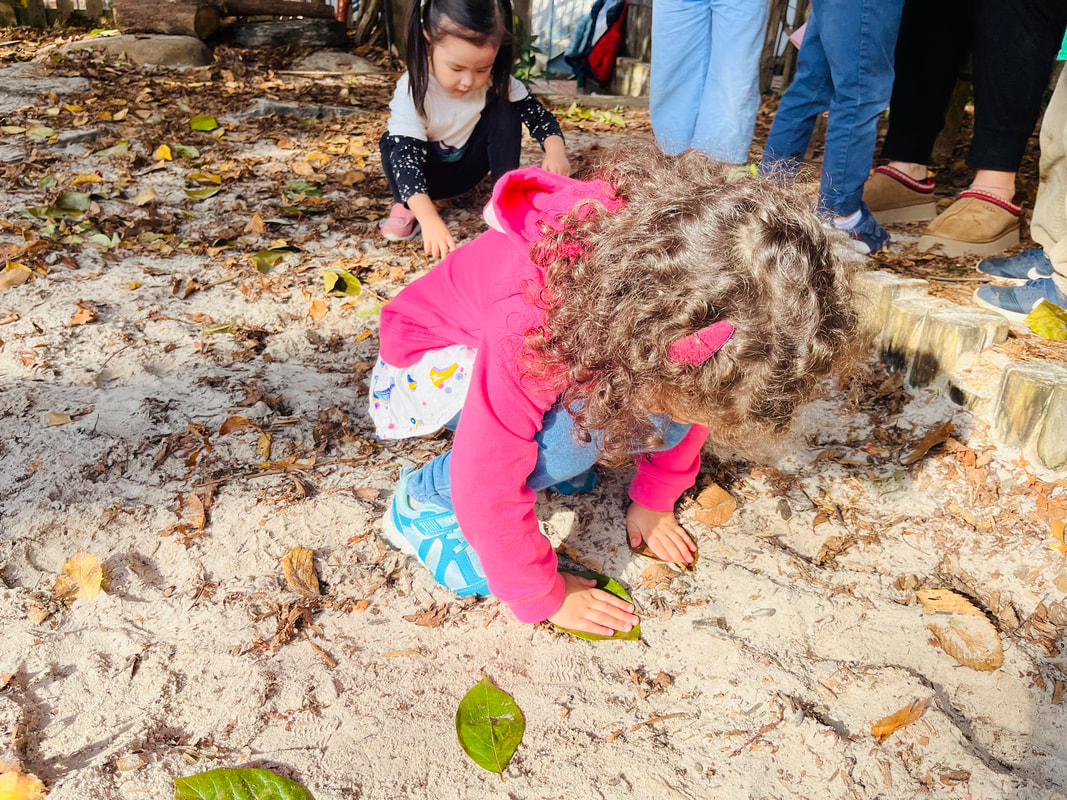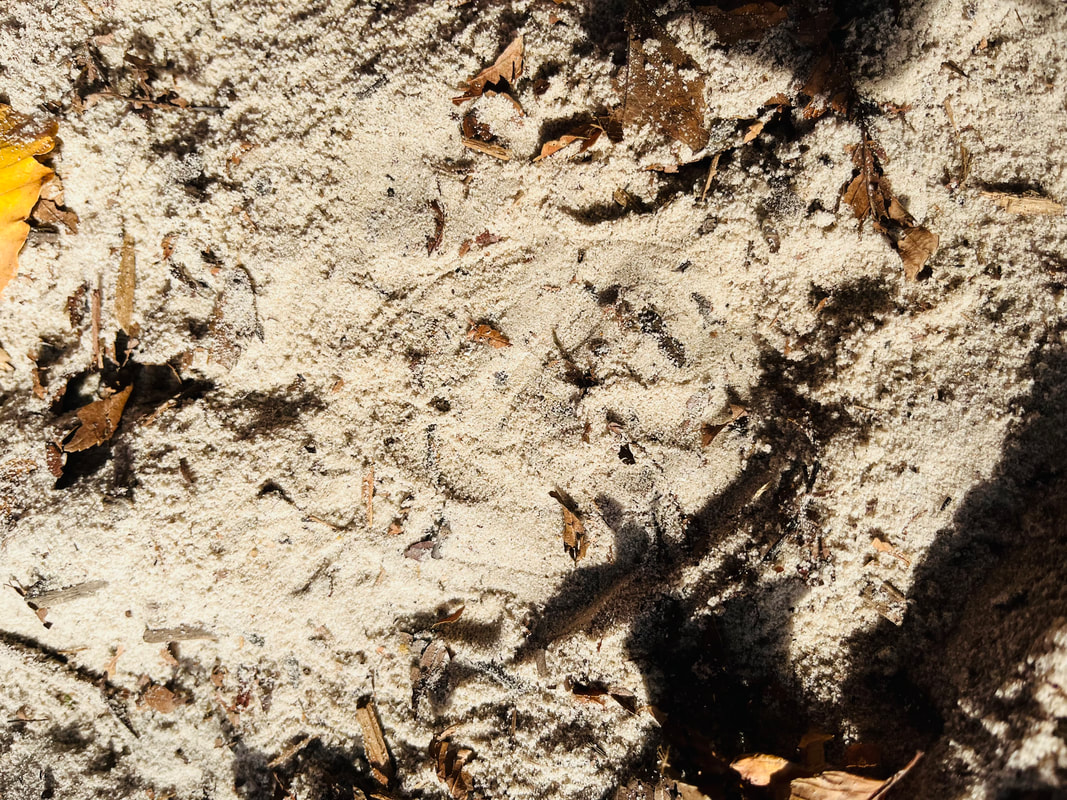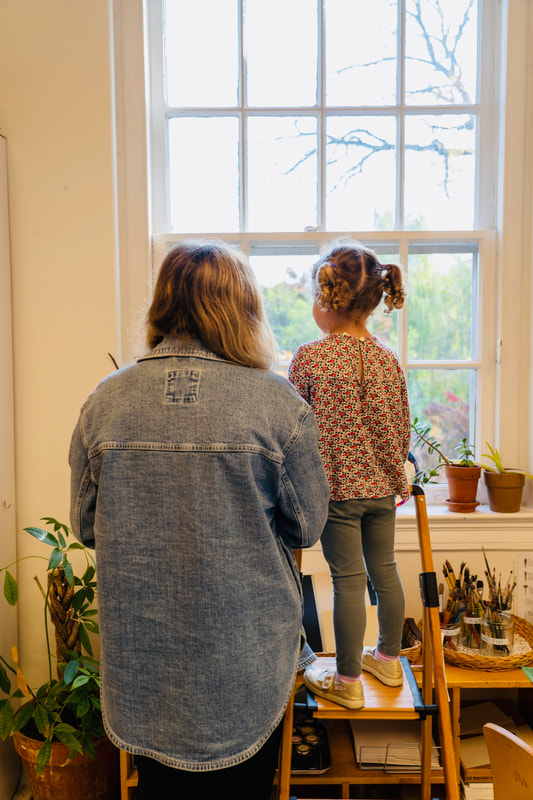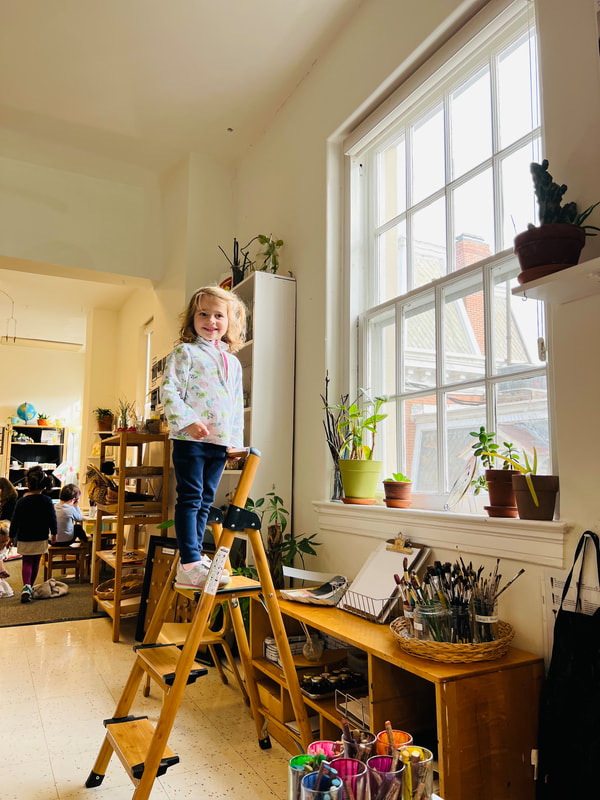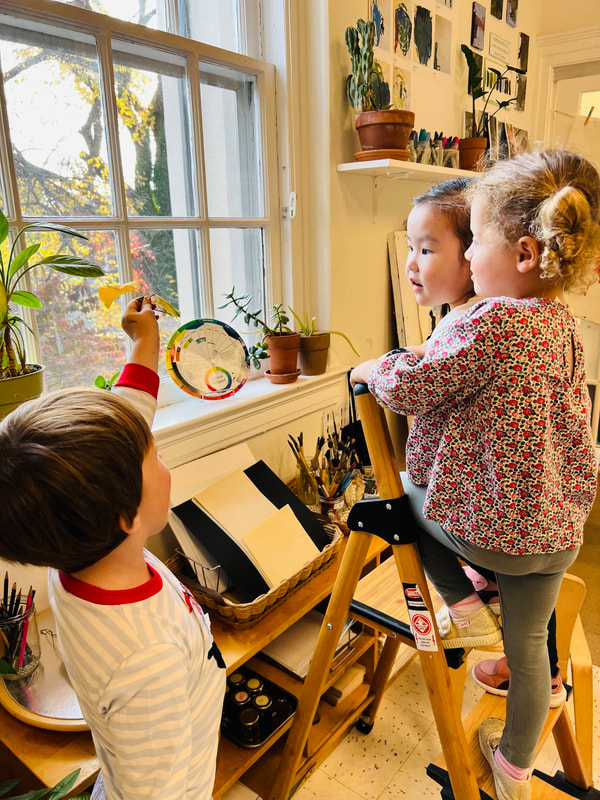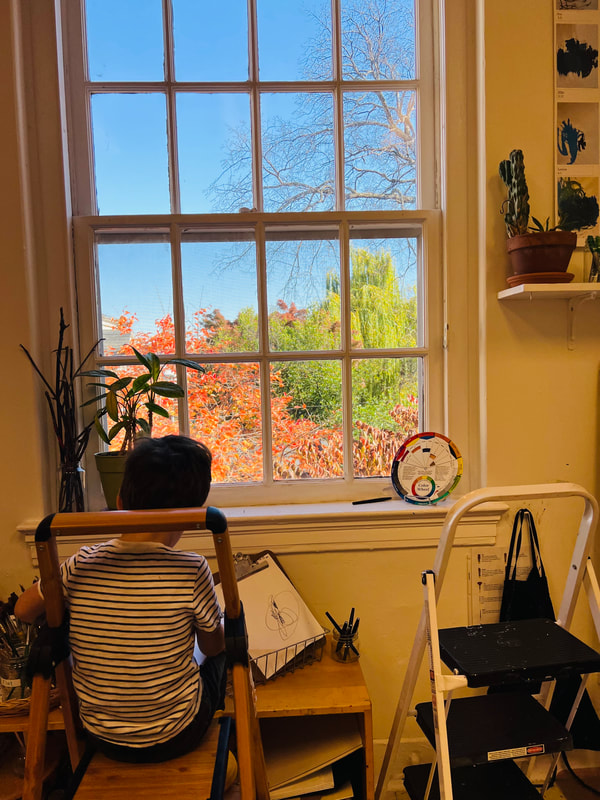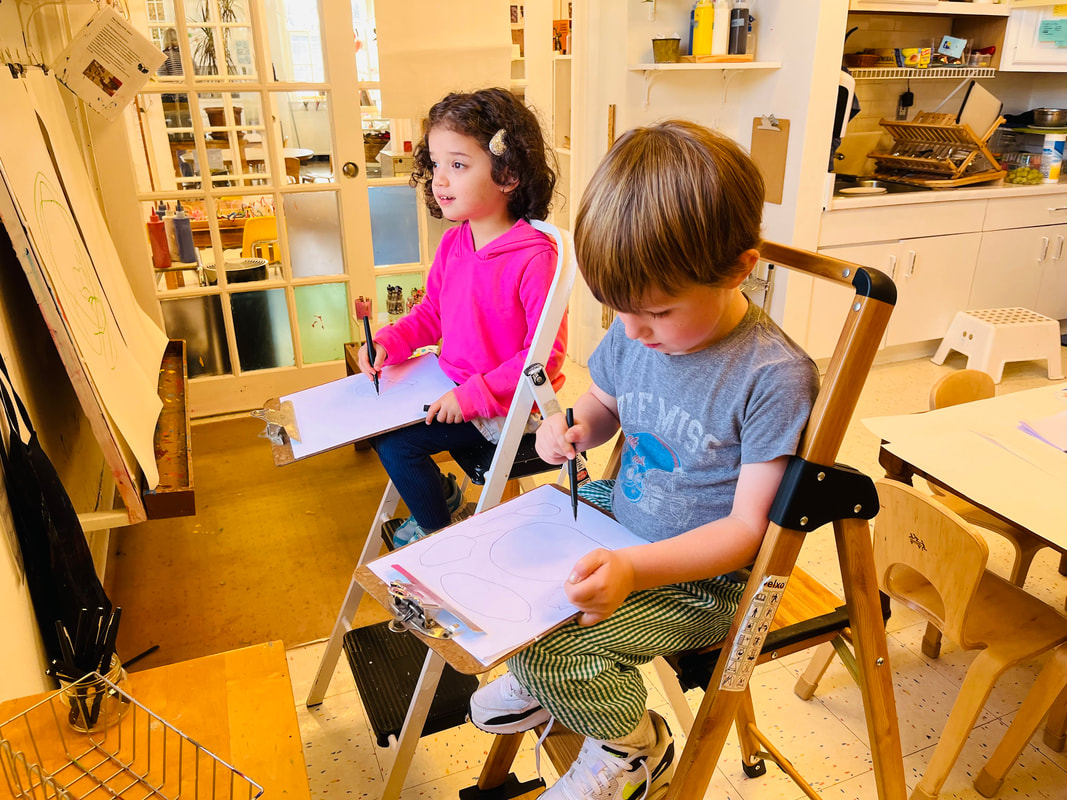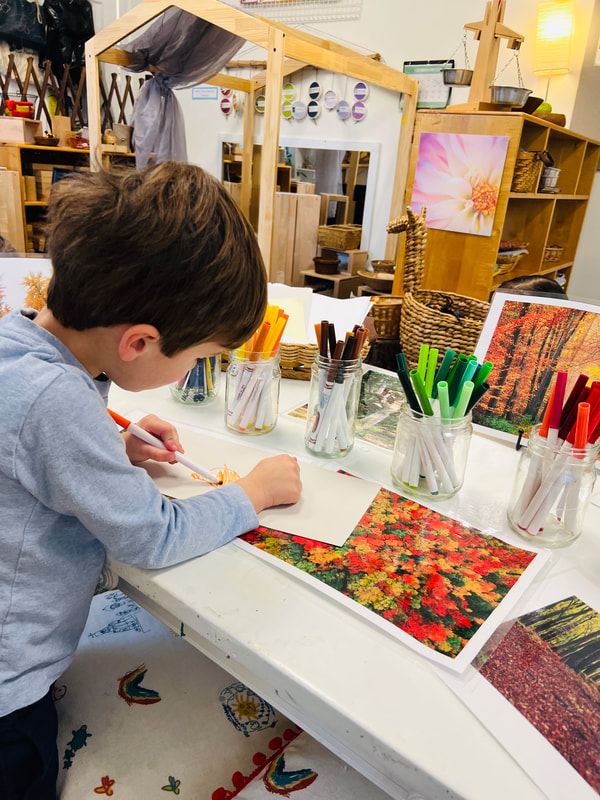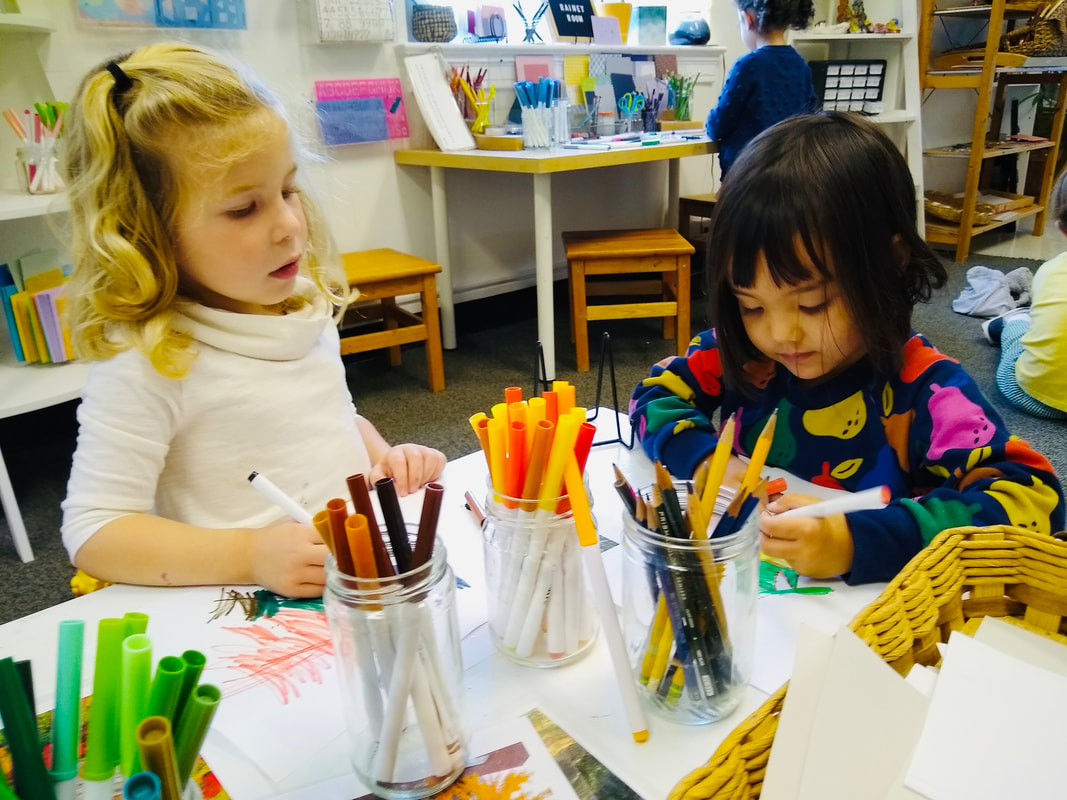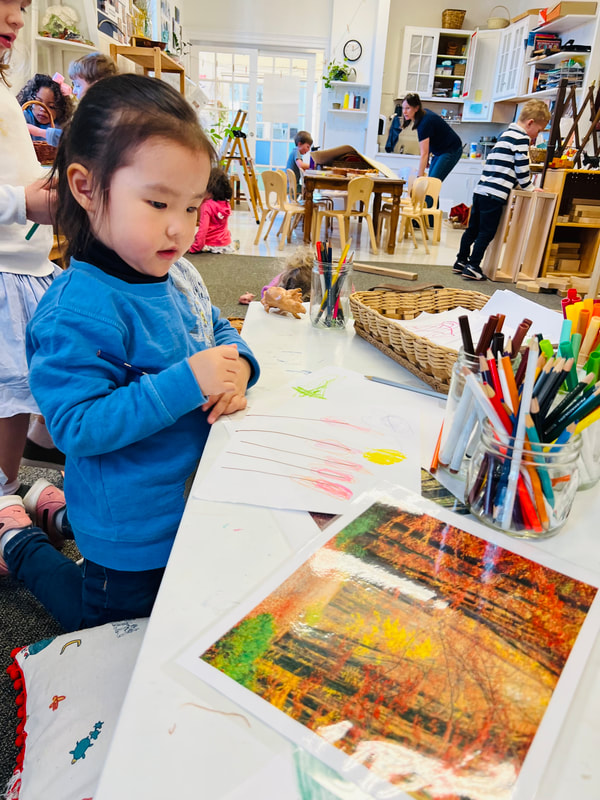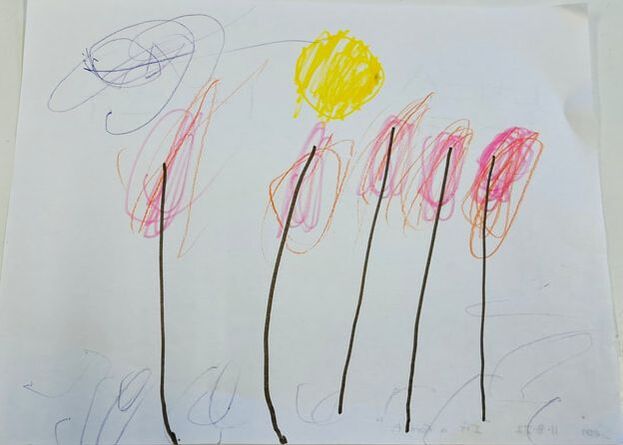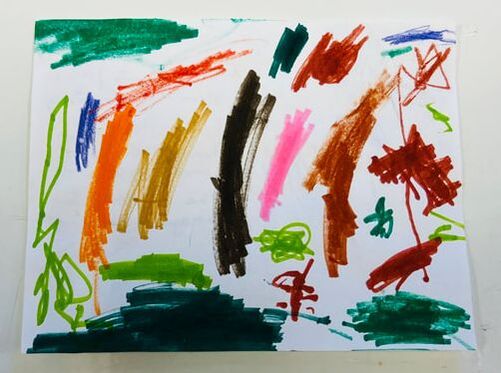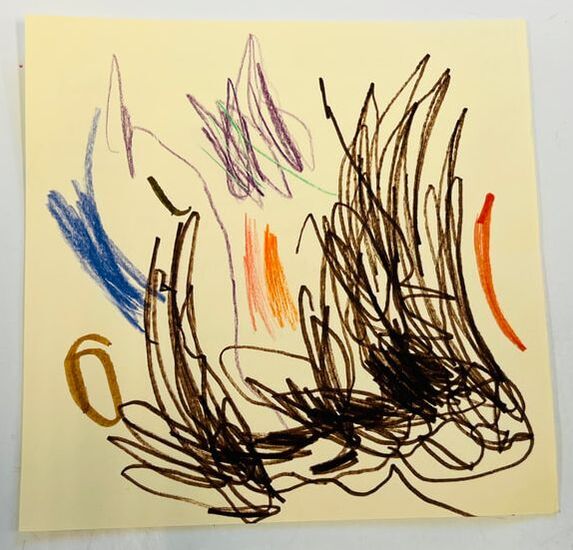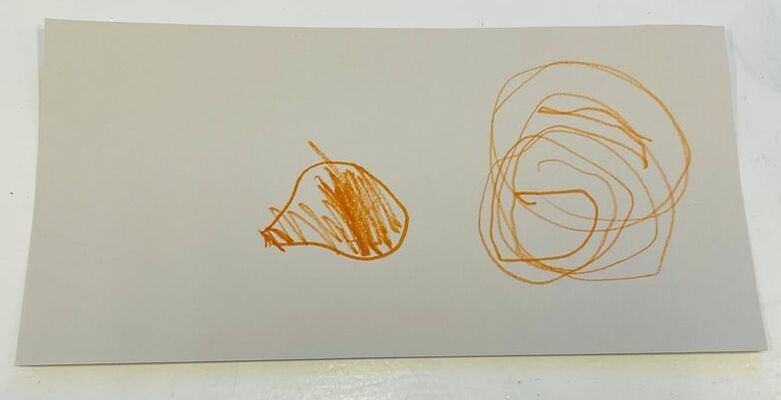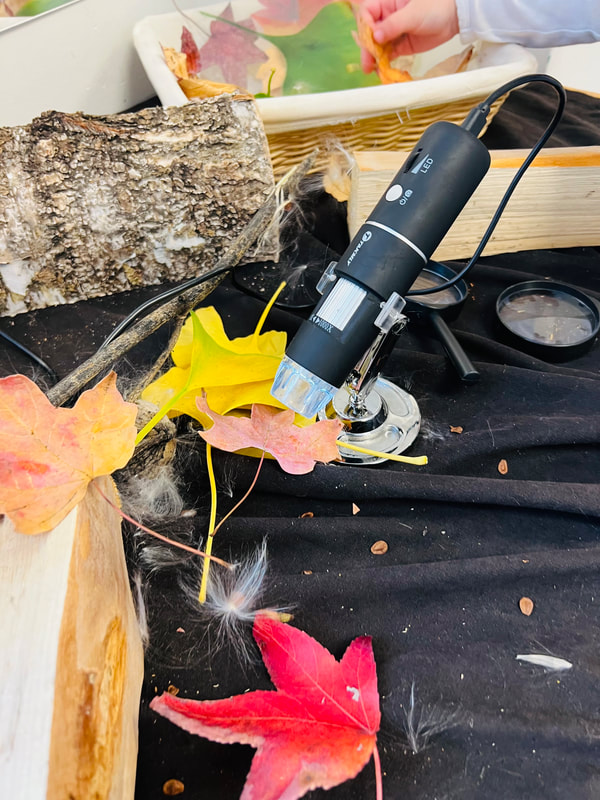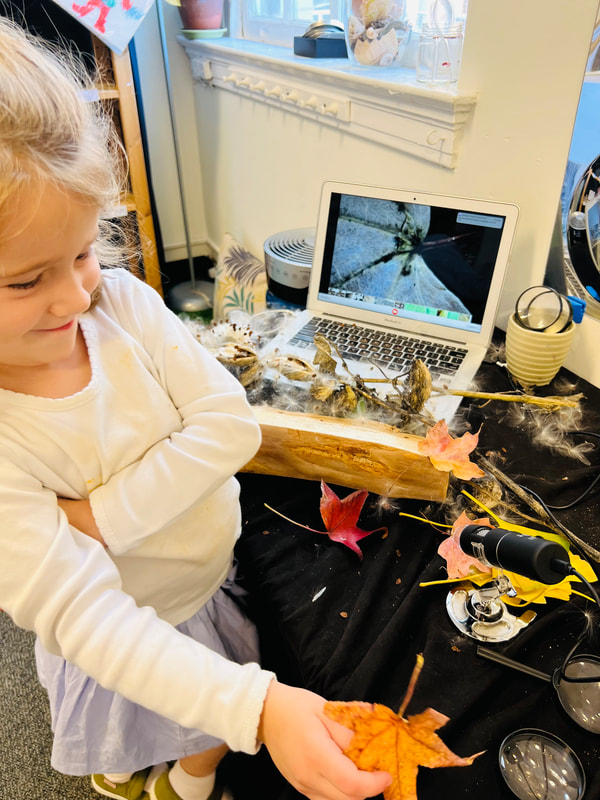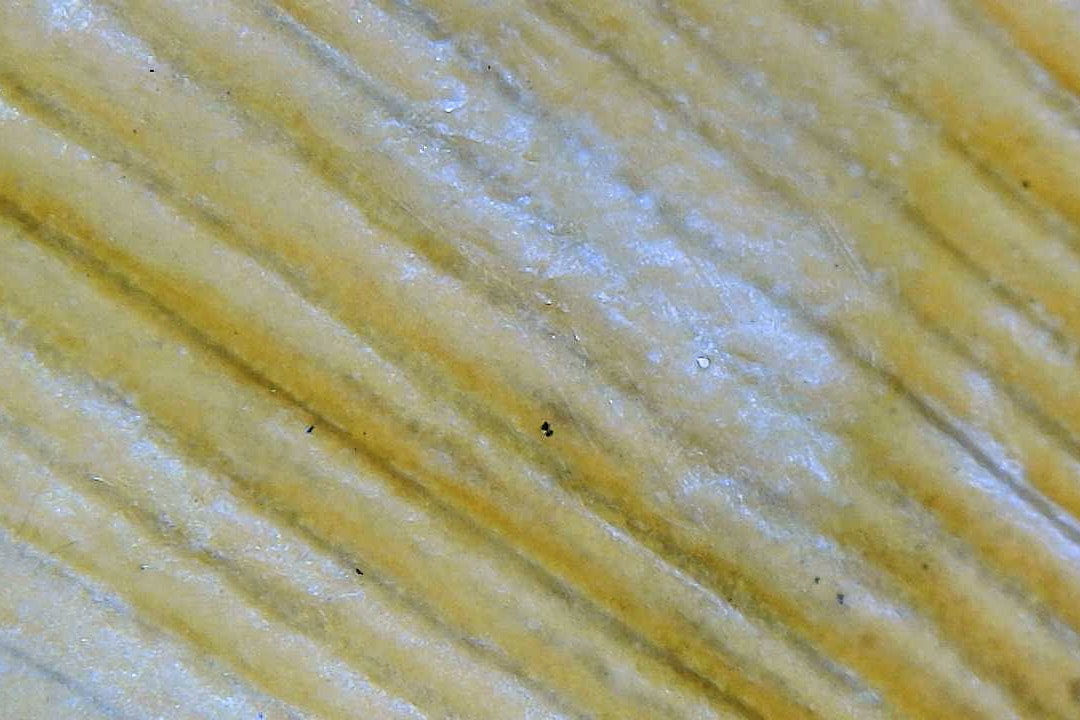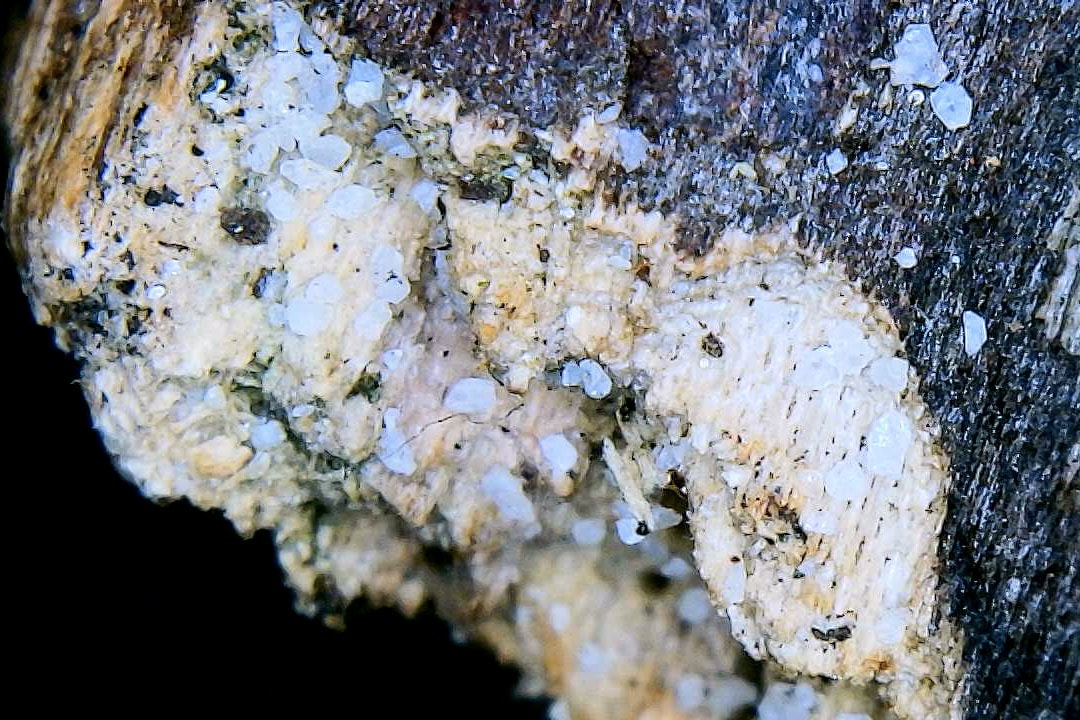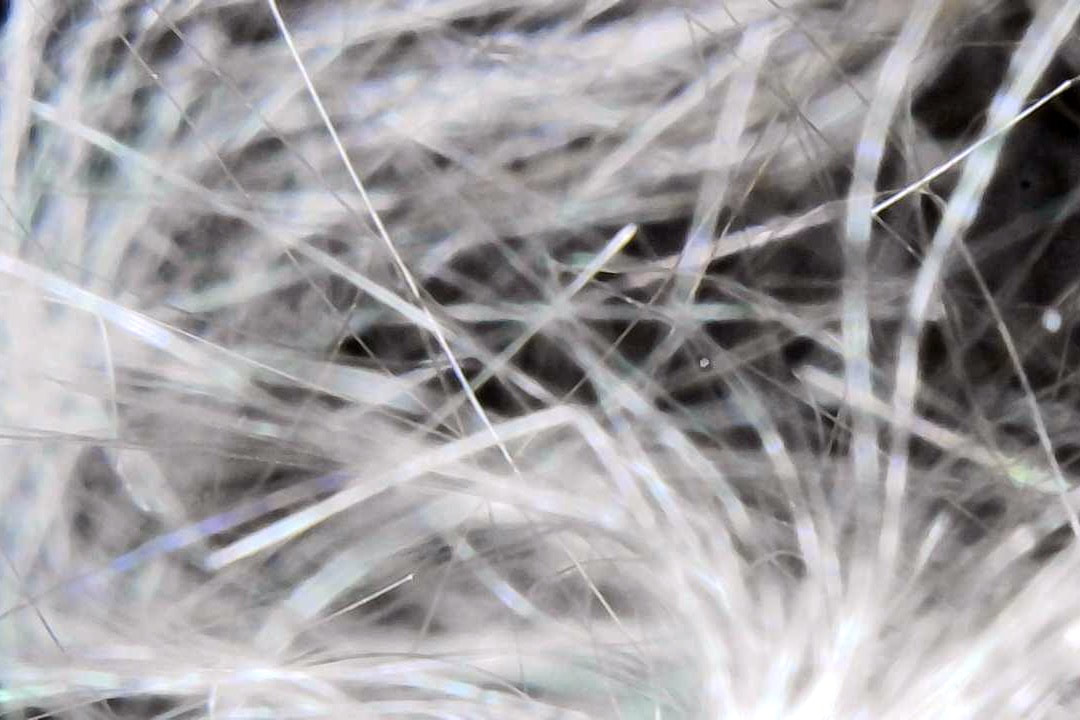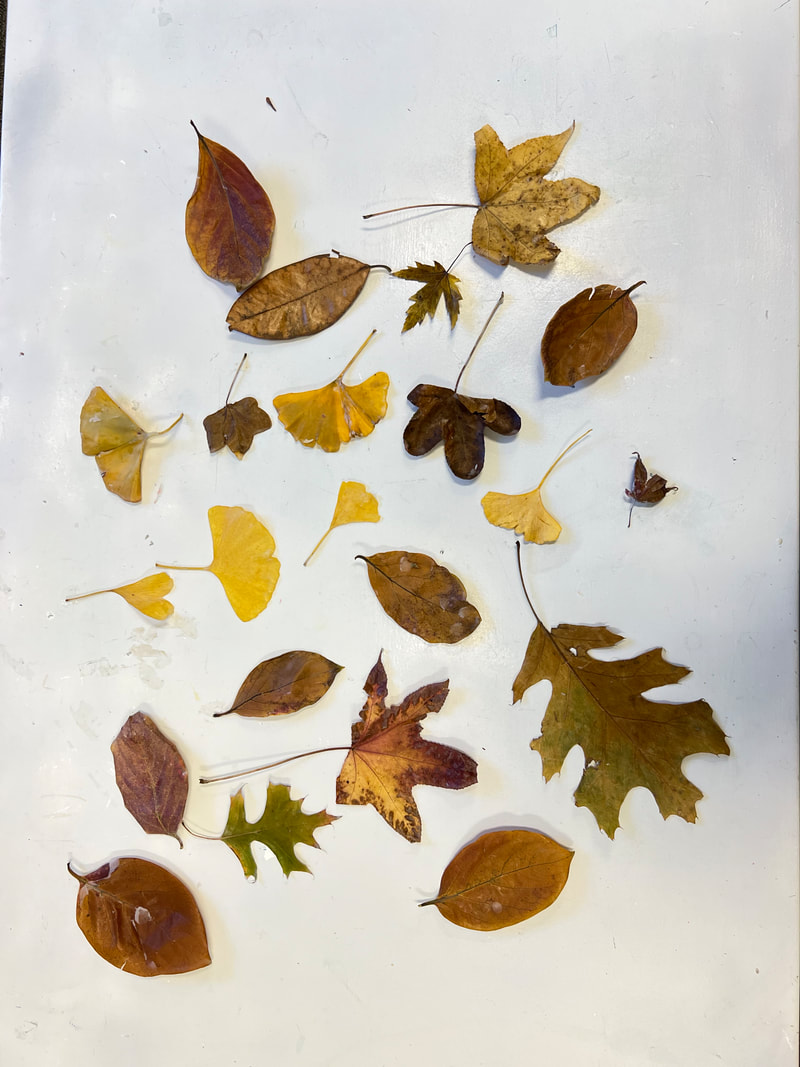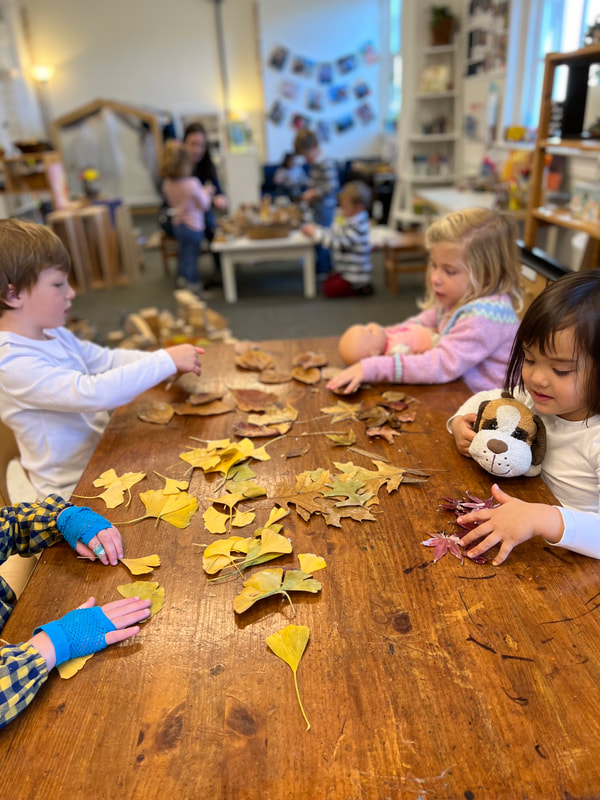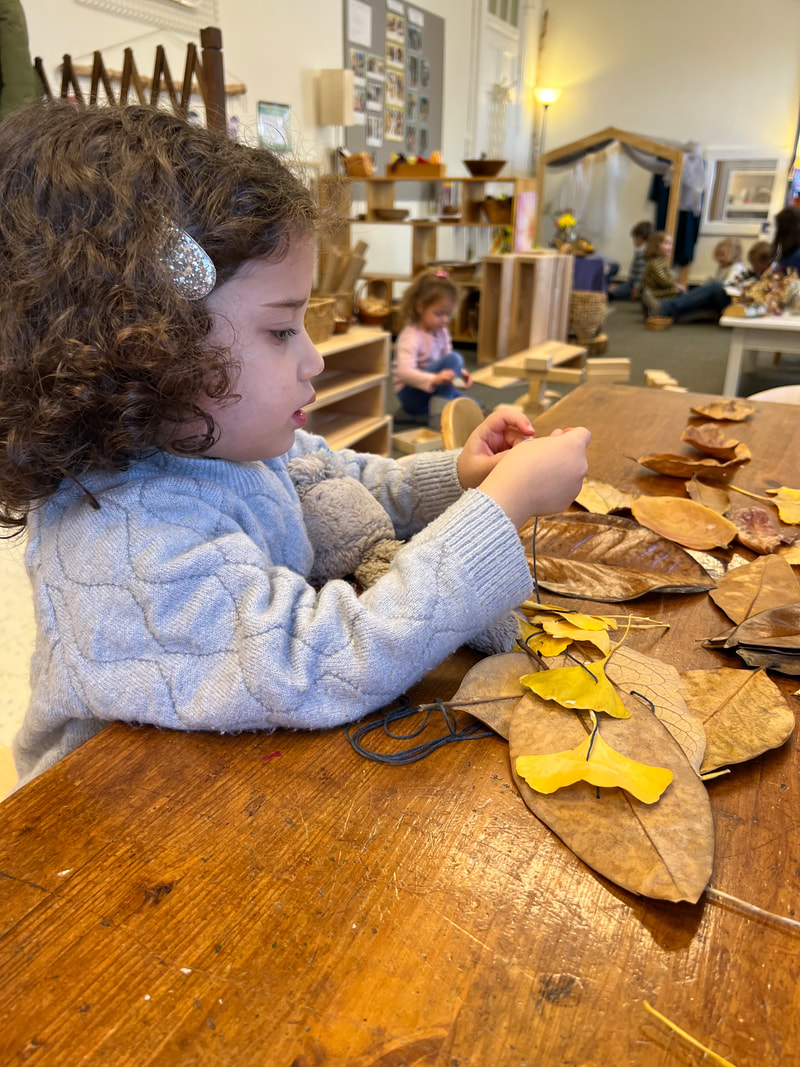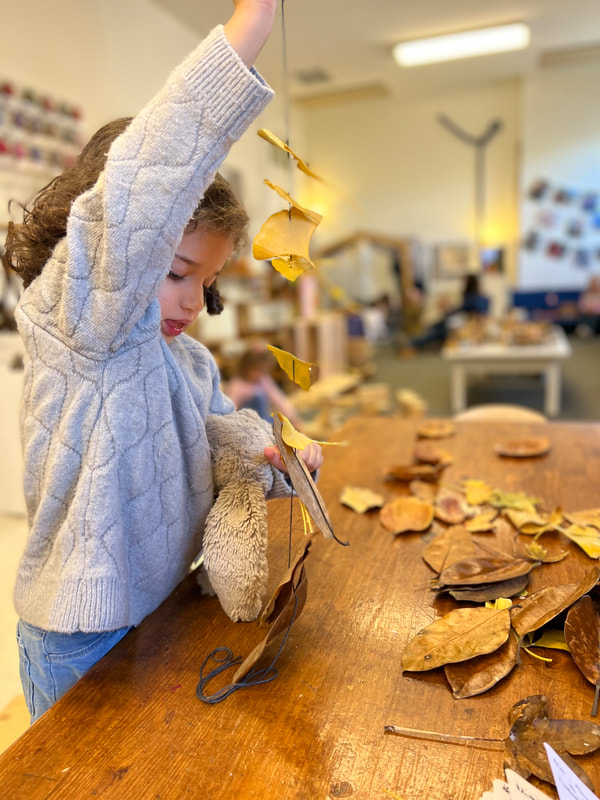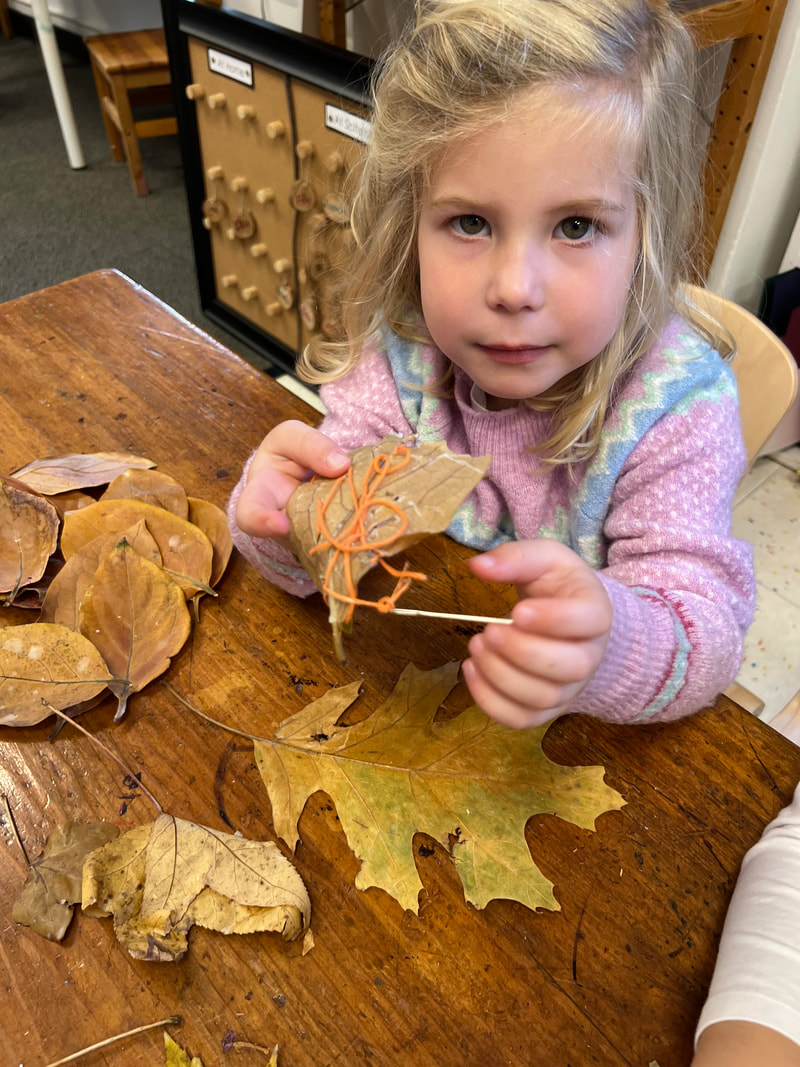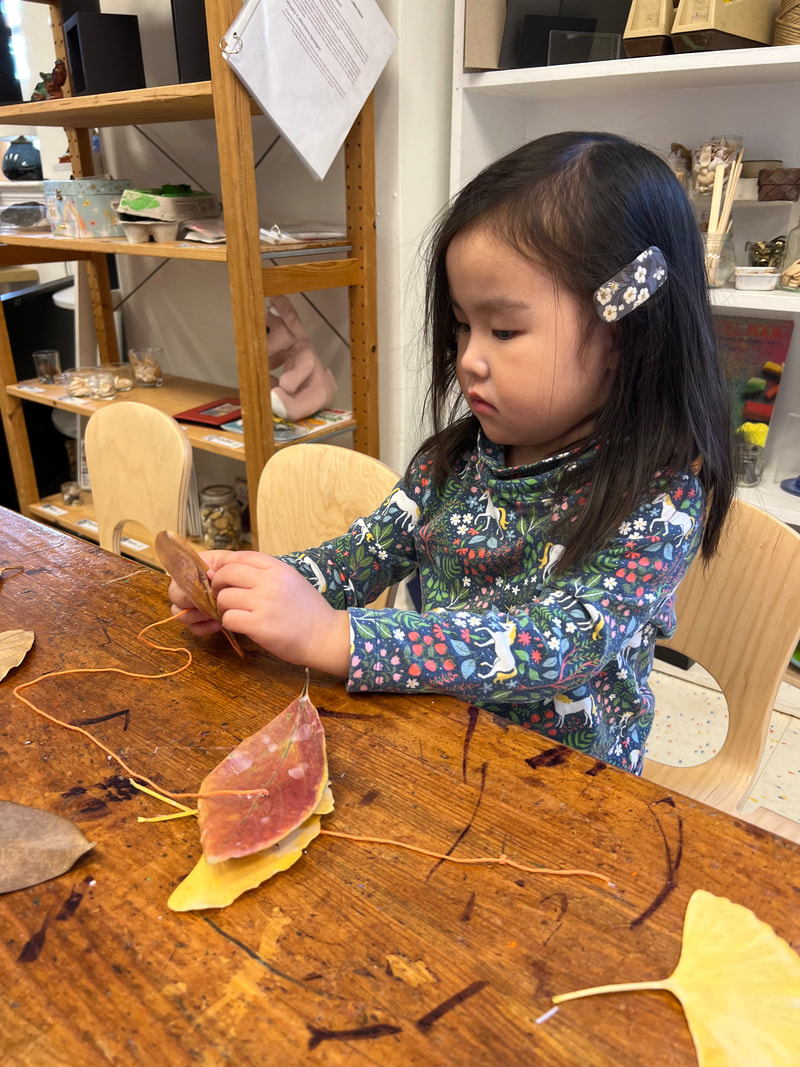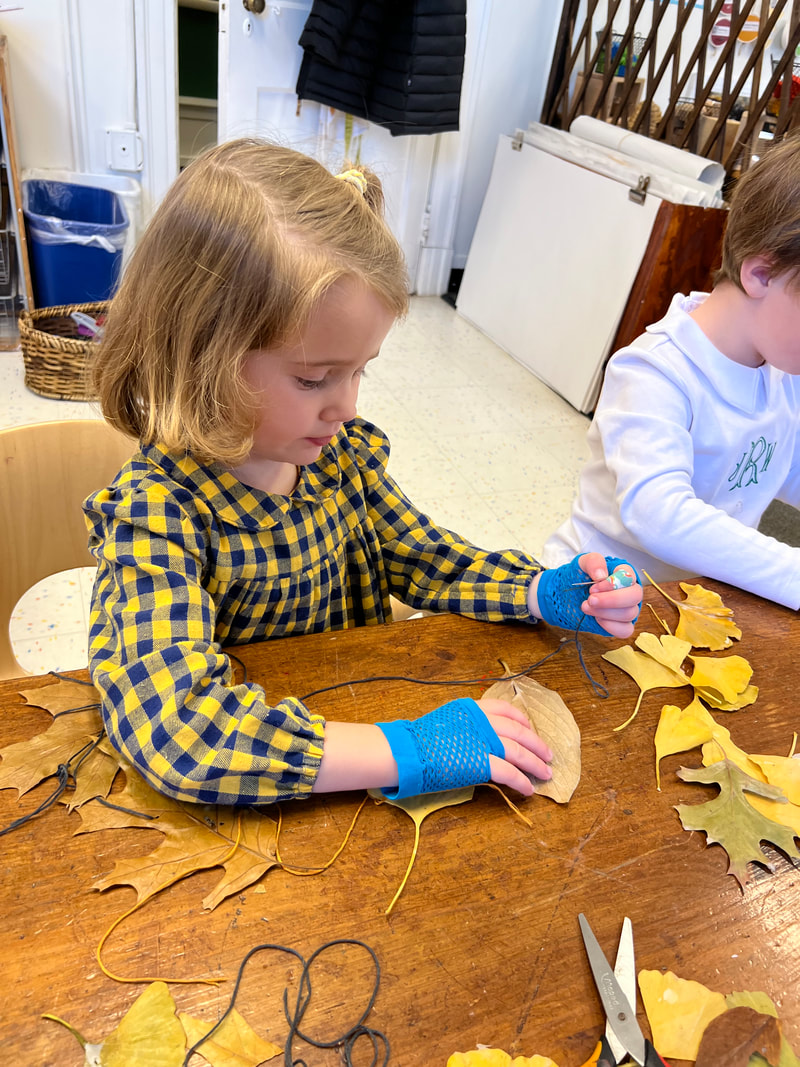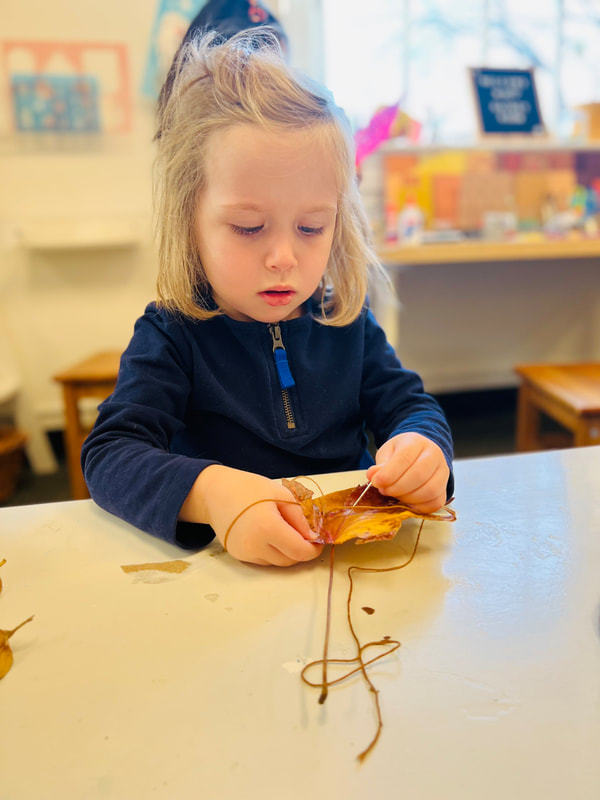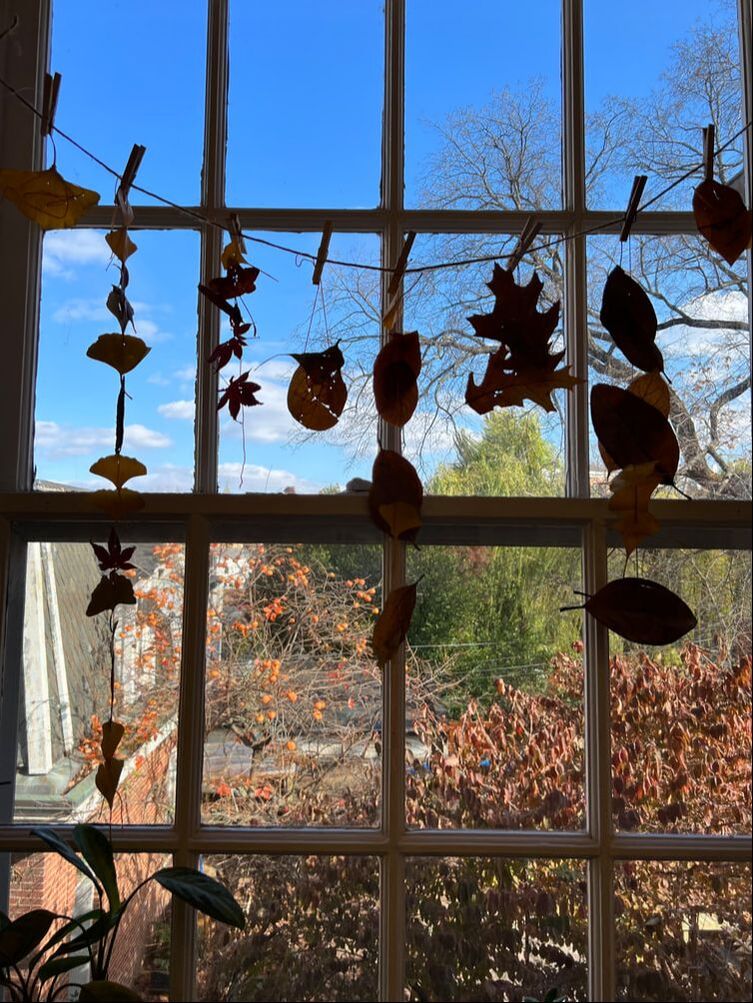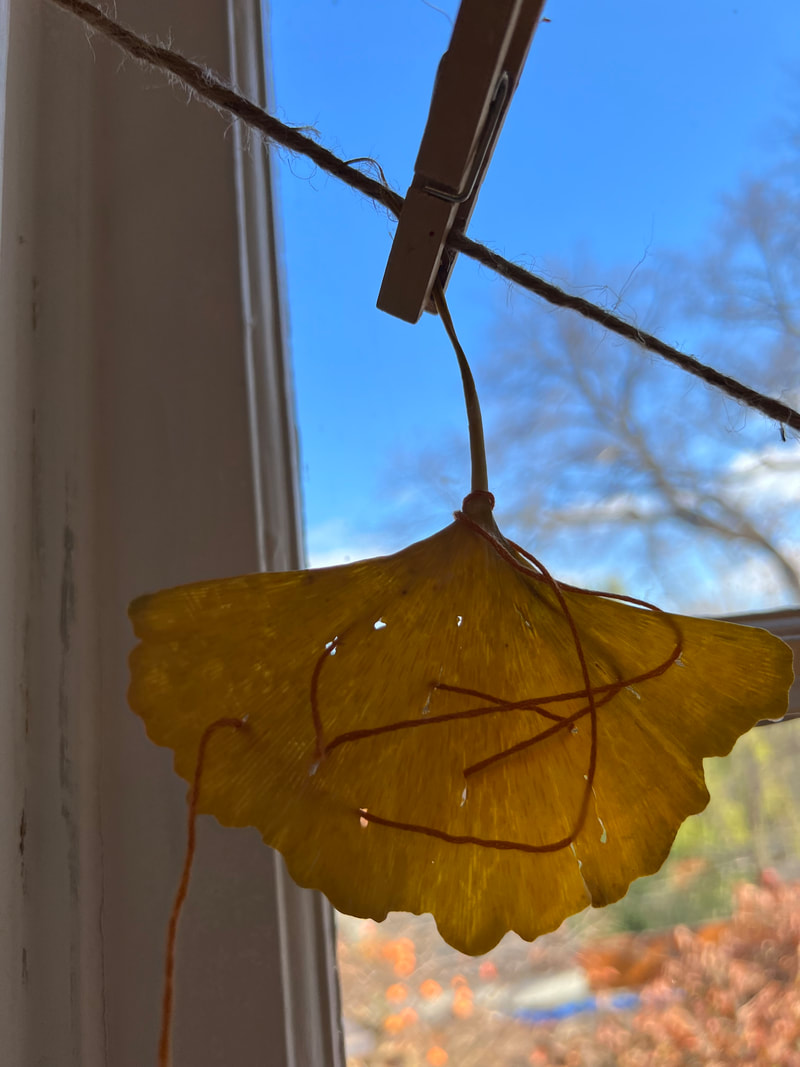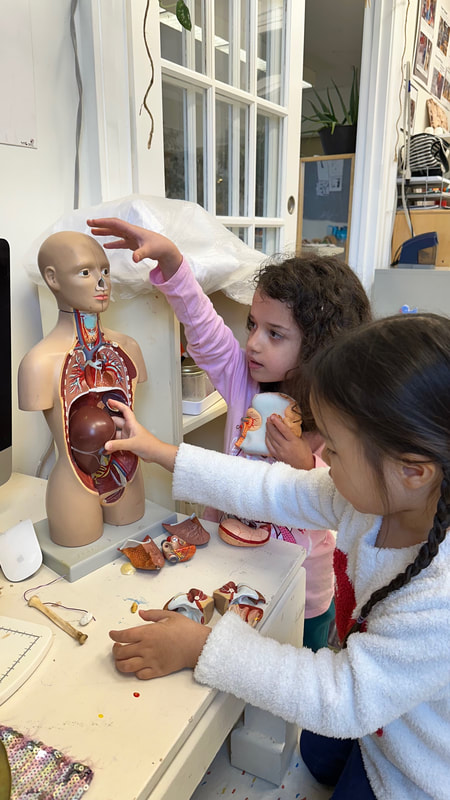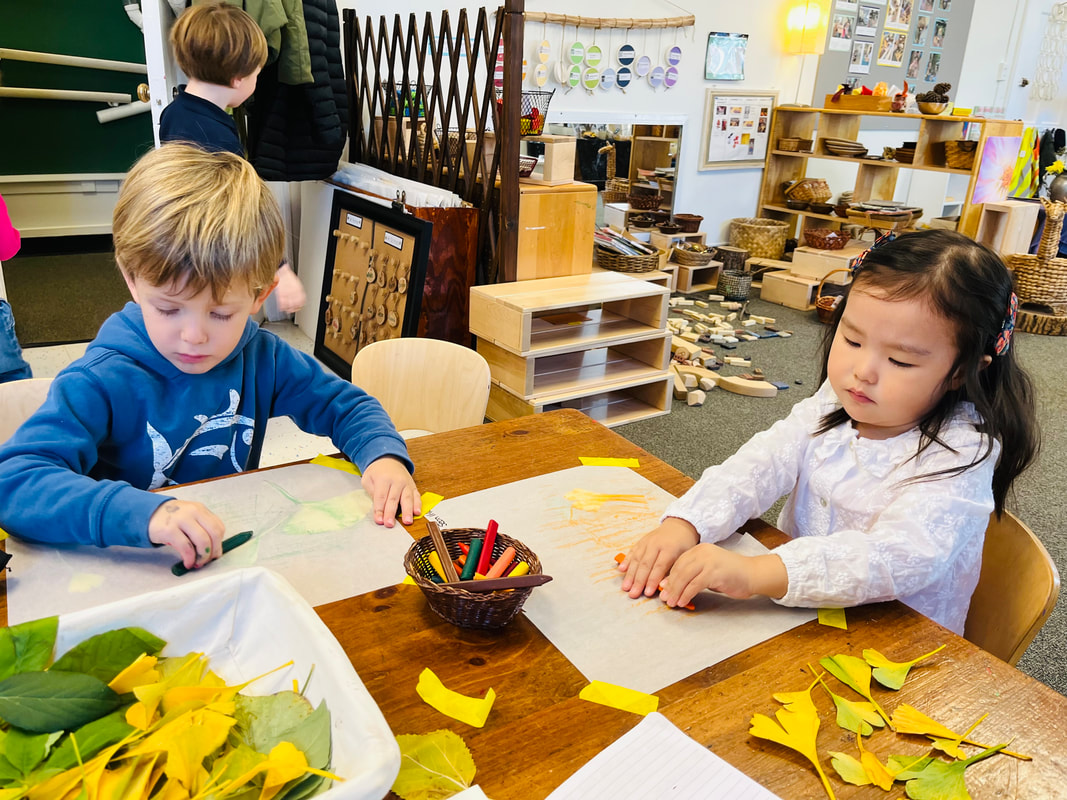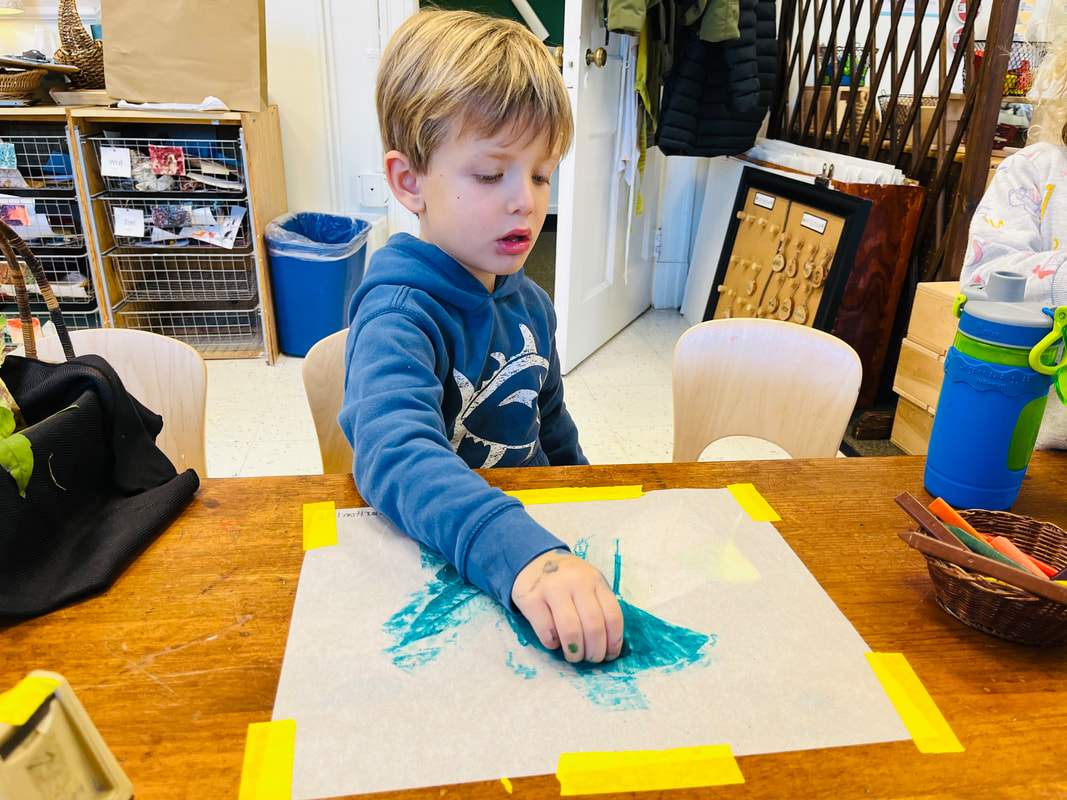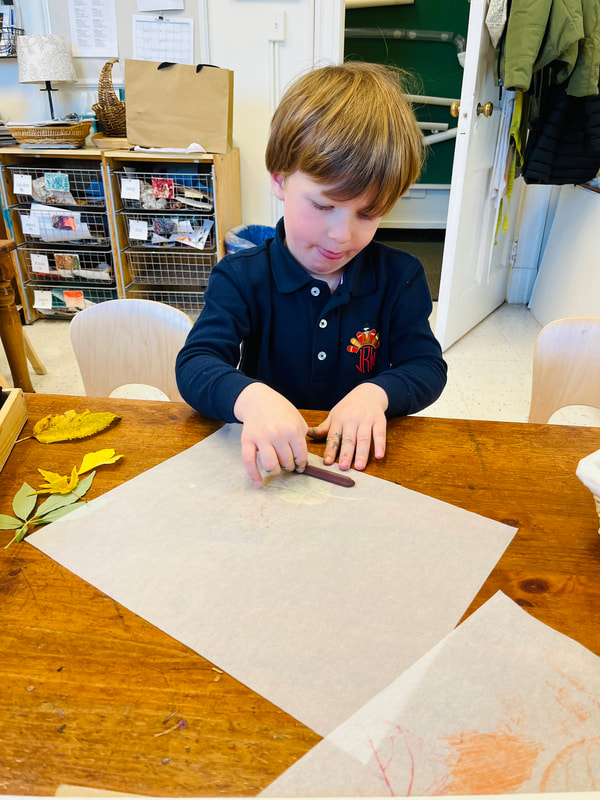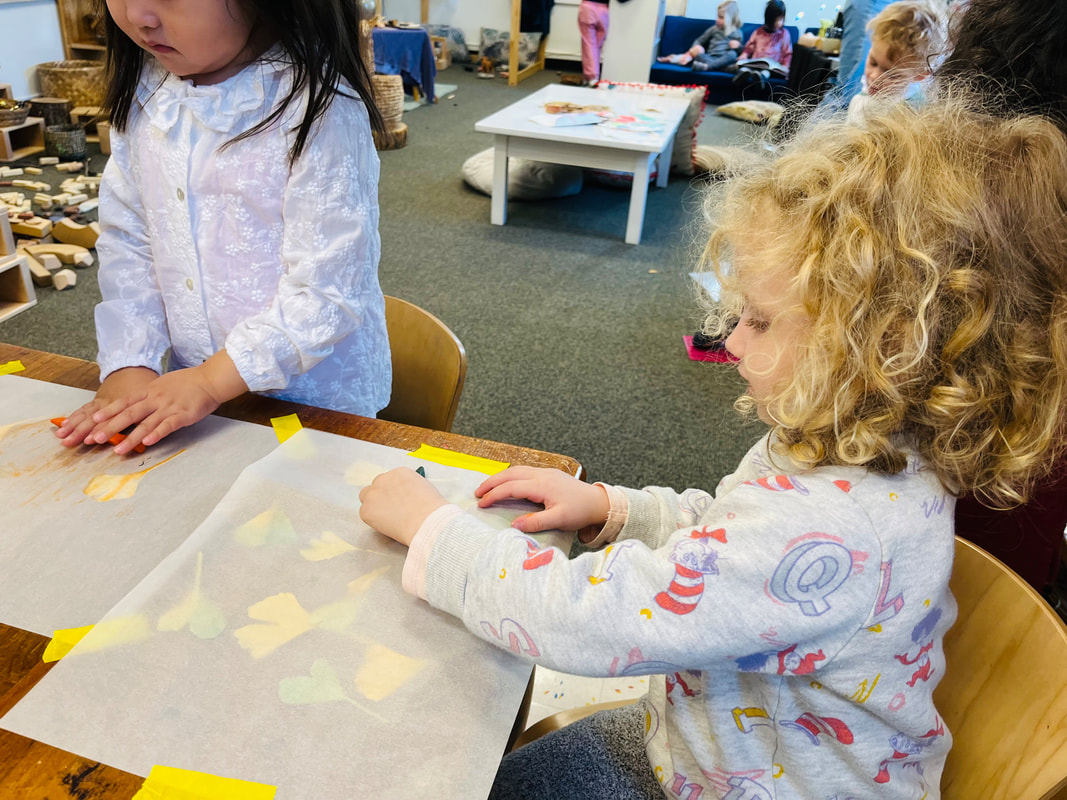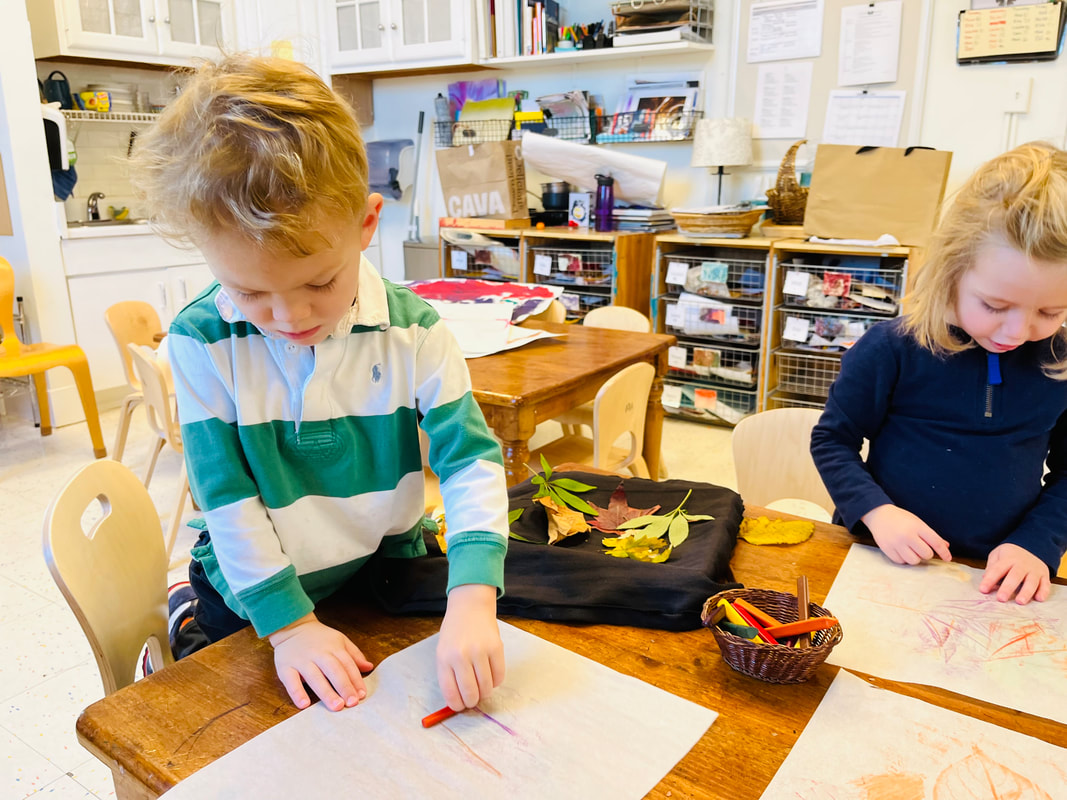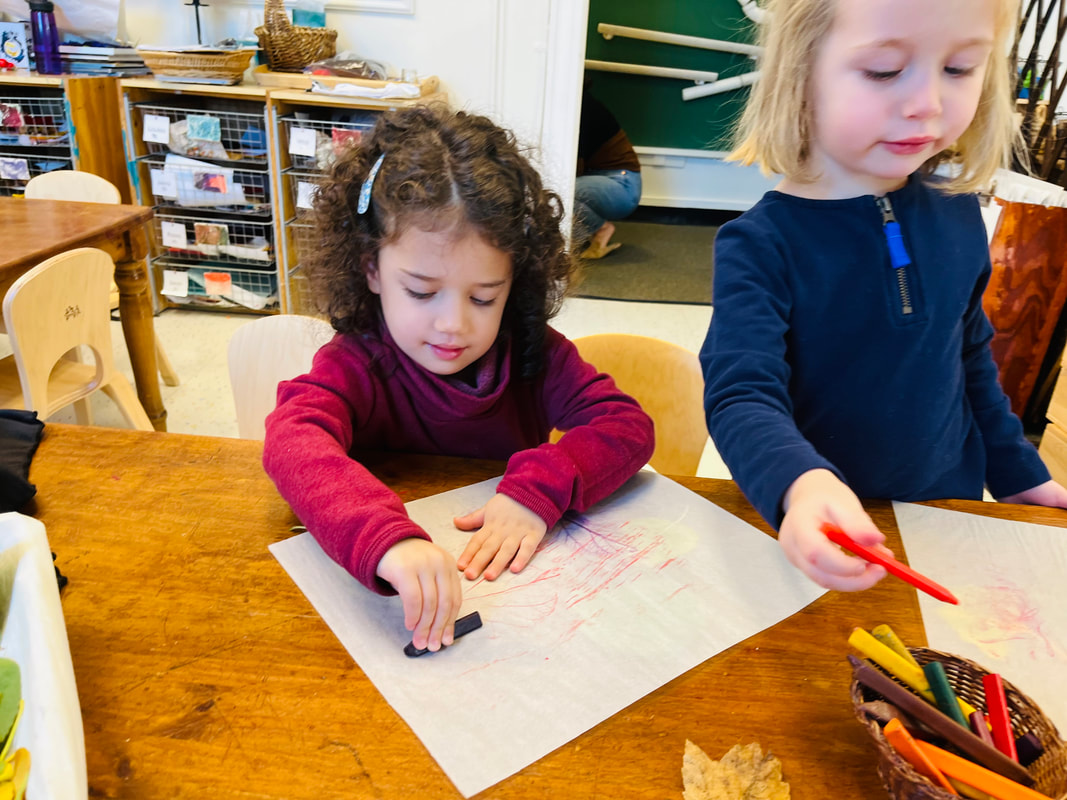|
"I know why the leaves turn red and orange. Because it’s fall. Because the snow day is coming." - Bailee Leaves have been of ongoing interest for the children. They have noticed them falling to the ground outside. They have discovered them on their way to school and brought them in to share with their friends. They have noticed the changing colors of the leaves, particularly on the vibrant orange Persimmon tree outside of the studio window. Following their interests, leaf experiences continue to be incorporated into our days both indoors and outdoors. Inspired by Andy GoldsworthyJoci, our pedagogical coach who works closely with our class, had been noticing the children’s interest in leaves and brought in a book by one of her favorite artists for the children to view. The book titled, Andy Goldsworthy: A Collaboration with Nature included photographs of Goldsworthy’s art in nature. His intricate designs use a multitude of natural materials including but not limited to leaves, ice, rocks, sticks, clay, feathers, and bark. The children noticed Goldworthy’s unique style and attention to detail. Cal, Charlton, Ava, and Mimi observe Andy Goldsworthy's nature art with Joci.
Inspired in particular by Goldsworthy’s arrangement of leaves, Joci and Karen took a small group of children to the front of the school where hundreds of colorful leaves blanketed the grass and sidewalk. The children began making arrangements by clearing a space in the leaves. "Clear all the leaves. All the leaves. Let’s make it very long and clear. " - Cal Cal, Charlton, and Ava clear spaces in the leaves and enjoy their abundance. The children then chose leaves for their arrangements and decided how to compose them. Ava counts the leaves in her design. Just as Andy Goldsworthy preserves his art with a camera, the children used the camera on the school iPad to document their designs. Mimi and Charlton's pictures of their leaf designs. The children were overjoyed to be surrounded by leaves with the freedom to explore their crunchiness and squishiness. One of the best things about the fall.
Later in the outdoor classroom, the children applied some of their new knowledge and discovered they could make prints with leaves in the sand. An interesting idea that we may apply to clay and print making in the near future. Observing Leaves from the WindowThere are hundreds of different images of the child. Each one of you has inside yourself an image of the child that directs you as you begin to relate to a child. This theory within you pushes you to behave in certain ways; it orients you as you talk to the child, listen to the child, observe the child. The idea of the Image of the Child is one of the key tenets of the Reggio Emilia philosophy. Everyday we think about changes we can make in the environment and in our relationships with the children to strengthen our image of them. One way we did this recently was when they were noticing the changing colors of the leaves out of the windows. They were grabbing chairs to try and stand on, but couldn’t quite get the view they desired. Observing this, we provided them with step-ladders to position them up higher. The children were hesitant at first, as ladders are usually only something adults are allowed to use. But our image of the children trusts that they are capable. Once they realized they could freely use the ladders, they fearlessly climbed up and had so much to share about what they saw. Some of the children felt inspired by what they were seeing out the window and decided to draw. Drawing Autumn Leaves and ForestsObserving the leaves from the window led to curiosity about the various colors of leaves and where leaves can be found. We found images of fall forests and the children used an array of paper and mark making materials to create their own. Leaves Under the Digital Microscope
Preserving LeavesPart of the beauty of fall is the impermanence of the leaves. Their color on the trees only lasts for so long before they fall. But, what if there were a way to preserve that color for a bit longer? One way we found was by using beeswax. The process of preserving leaves provided opportunities to explore ideas such as liquid vs. solid, hot vs. cold, wet vs. dry and living vs. non-living. The children collected fresh and colorful leaves and carefully dipped them into warm beeswax. After coating them in a thin layer, they watched as the air quickly dried the wax. Their conversations gave insight into some of these new ideas and observations: Choosing Leaves to Preserve Fay: This has a different color in it. A little green. Whit: This one has a little dirt on it. Whit: I see the sides. It’s getting boiled. It smells hot. It’s like it’s soup. Fay: It’s like a pop. I’m going to do this red one. Whit: This is getting hot. I’m doing all of the gingko leaves. Ford: That’s the first time I did a small one. Watching the wax melt Bailee touching the hard wax: I’m gonna break it so it melts. Whit: This is sticky. Bailee: It’s starting to melt. Turn it turn it turn it. Dipping the leaves and letting them dry Bailee: It’s still dripping. Only the leaf can touch it (the hot wax). It doesn’t hurt the leaf. Ford: How did it (the wax) dry so fast? What if we hold it in there too long> Charlton: I put wax on it and it dripped off. Mimi: It’s not dripping anymore. It’s a very beautiful one. Is this one I already did dry? Mimi touches the leaf: Almost. This one is wet. It’s so slimy (touching the dried leaf with beeswax on it). Fay: It’s so tiny (the leaf). Maybe we should look at it with the microscope. After it dries. Fay: Okay it’s dry now! Sewing Preserved LeavesNow that we had preserved the leaves, we asked the children what we might do with them to be able to display their beauty. Recent sewing projects were top of mind. "What should we do? Should we sew them?" - Ava Leaves after being preserved in beeswax.
The children's leaf sewings are hanging in the window in the studio. The light shines through in the morning to reveal the colors that have since begun to disappear from the trees. The children's preserved and sewn leaves. Leaf RubbingsOne day while we were exploring leaves under the digital microscope, Fay suggested an idea that she had done at home: leaf rubbing. We found tracing paper and placed them over fresh leaves. The children rubbed crayons over the paper, revealing the shapes and patterns of the leaves underneath. Seon: It’s still not working. Seon: You rub it on the side. I’m doing it. I’m rubbing the leaves. Seon looked at Charlton's leaf rubbing and identified his leaves: Ginkgo, gingko, sweet gum. And a ginkgo! Charlton counted his leaves: 1, 2, 3, 4…..4! Seon: We both have the same, but they are kind of different. His are big, mine are small. Charlton: I only love leaves. Ginkgos don’t have veins up. They don’t. Seon: Look at mine. It’s so beautiful. Karen: It’s so vibrant. Seon: What’s vibrant? Karen: Vibrant is bright. Charlton: Mine is bright, too! Ellie: I want a different leaf. Ava: Look at this one (holding up a single leaf). Karen held down the tracing paper over Ellie’s leaves. Ellie: I do the stem. Watch out for you hand Karen. Ellie looked at her work: This one too darky (brown). Ford joined the table. Ford: It’s a lot of leaf rubbing. Ford: I need another crayon, ‘cause I need purple. Ellie: I put one red in the middle. No, I need orange now. Ford: I’m making a line (the main vein of the leaf was prominent in the crayon rubbing). Ford looked at his paper: How did I do that? Ford added two more leaves under his paper and continued to use the crayon. Ford: I made three lines. These leaf rubbings will be another way to preserve the beauty of the leaves in our classroom after all the leaves have fallen outside.
0 Comments
Leave a Reply. |
Archives
March 2024
|
Proudly powered by Weebly
